Tweets
Replying to @oshpark
thanks!! 😃
(original)
Replying to @bateskecom and @MicrochipMakes
I do not, but I know CircuitPython runs on the Teensy, and I assume folks use touchio on it. I don’t see why it wouldn’t work in theory, but then, this is a more complex design than a cap touch button, so worth testing out. I need to get me a Teensy-> Feather adapter!
(original)
Replying to @anne_engineer and @oshpark
Thanks Anne! A while back @dan_halbert pointed me to the implementation using 1M resistors, and I made a FeatherWing to try out a matrix that way. It worked well, as I recall, but definitely going to dig it up to test some more :)
(original)
Replying to @bateskecom and @MicrochipMakes
It does! Touchio boils it down to a raw_value and a threshold that represents the untouched pad, and for the cross platform version, you can tweak it even more (it’s a measure of the time to discharge). I just did this quickly this morning to see how it worked :)
(original)
Replying to @bateskecom and @MicrochipMakes
For the SAMD51 and other platforms, CircuitPython has a cross-platform algorithm (https://github.com/adafruit/circuitpython/blob/master/shared-module/touchio/TouchIn.c) that allows the use of any digital pin, but it requires a 1MΩ resistor pulling each touch line to ground. I did a FeatherWing this way to test it, and it worked quite well!
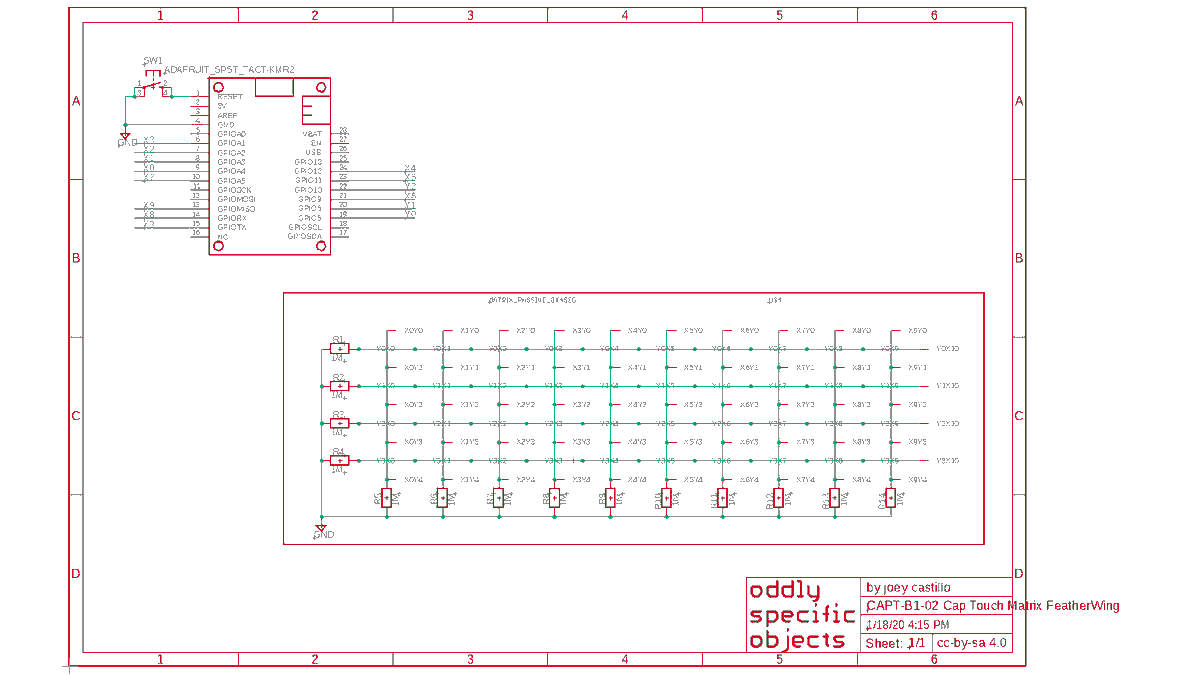
(original)
Replying to @bateskecom and @MicrochipMakes
Basically each row & column is tied together; then using Adafruit’s FreeTouch library, it can be as simple as scanning through each row and column (using touchio for CircuitPython, or FreeTouch in Arduino). For SAMD21, you have to make sure that the pins are PTC Y-channels. (1/2)
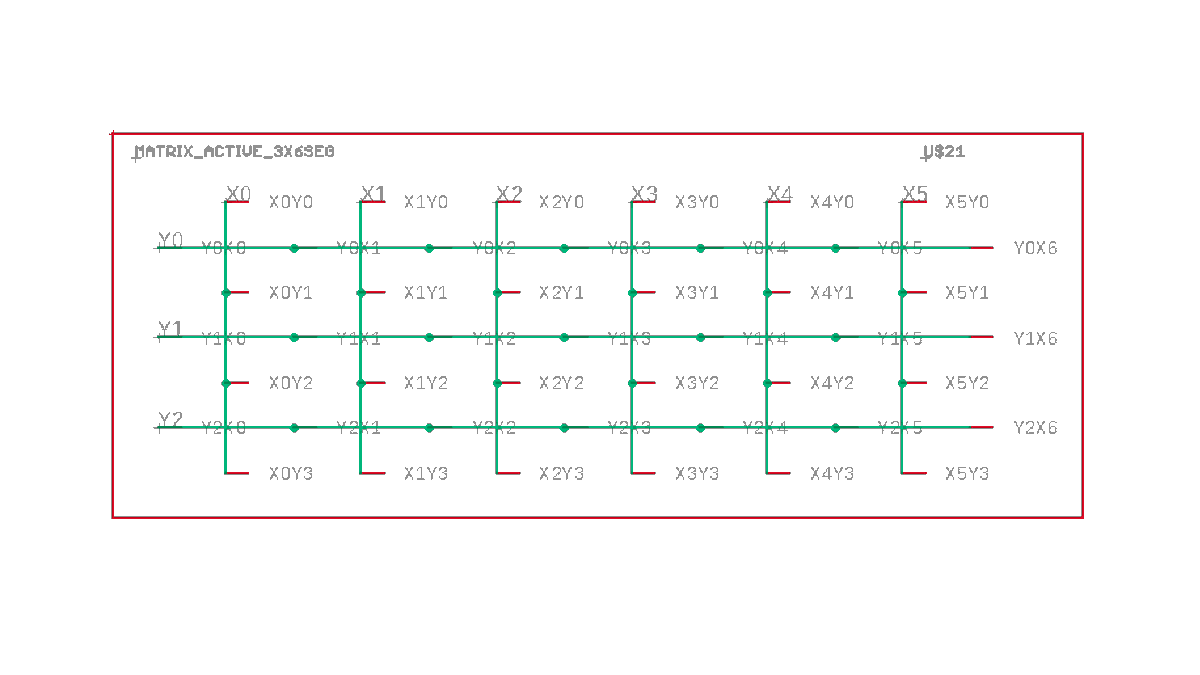
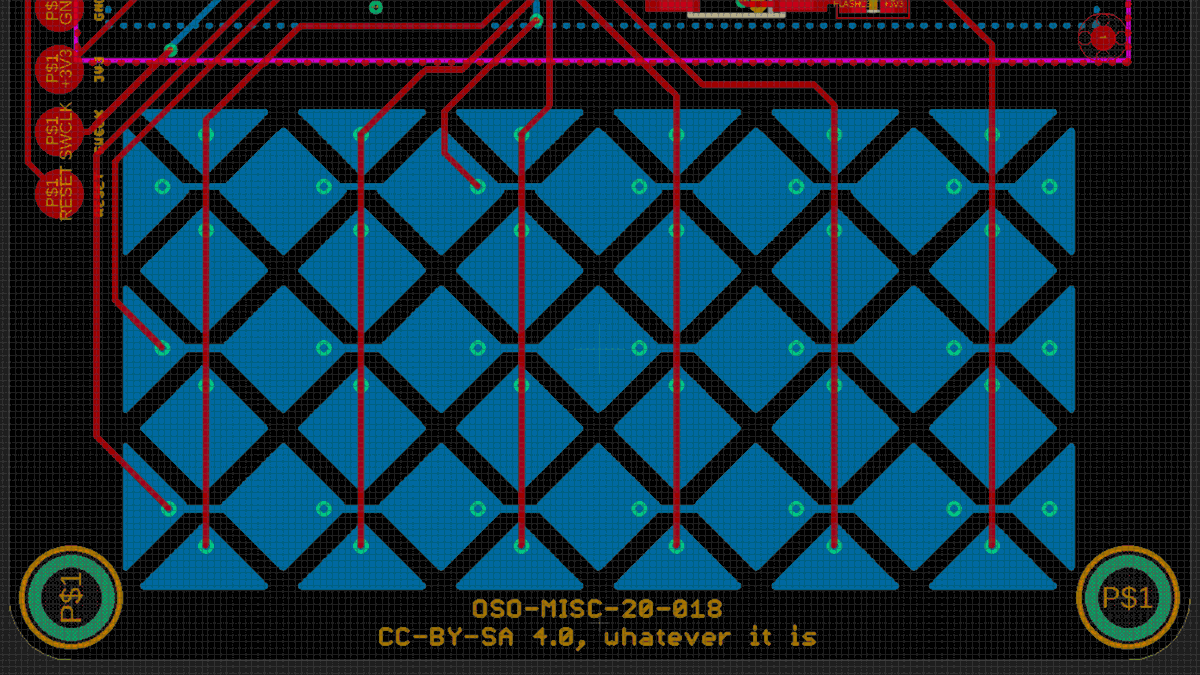
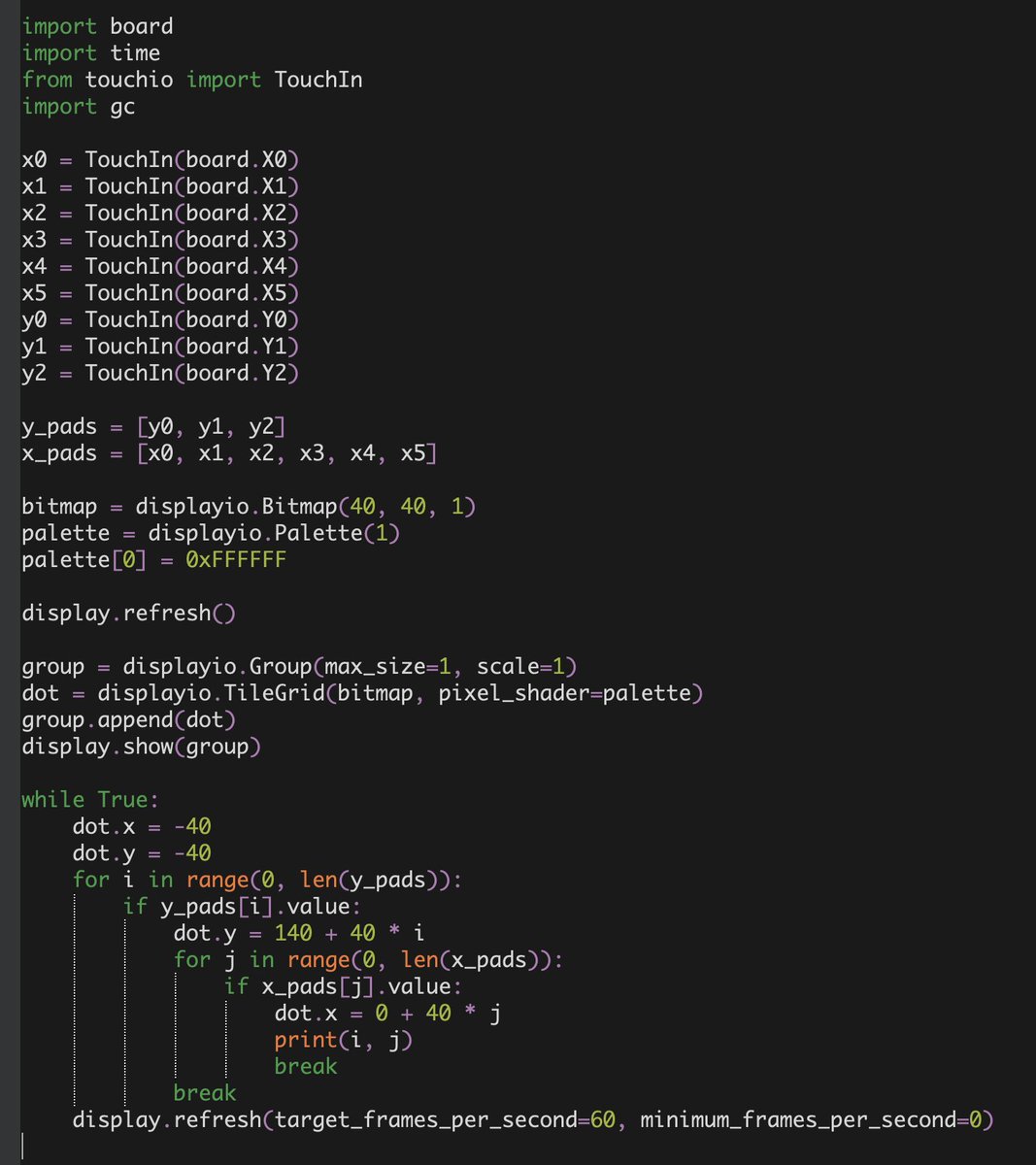
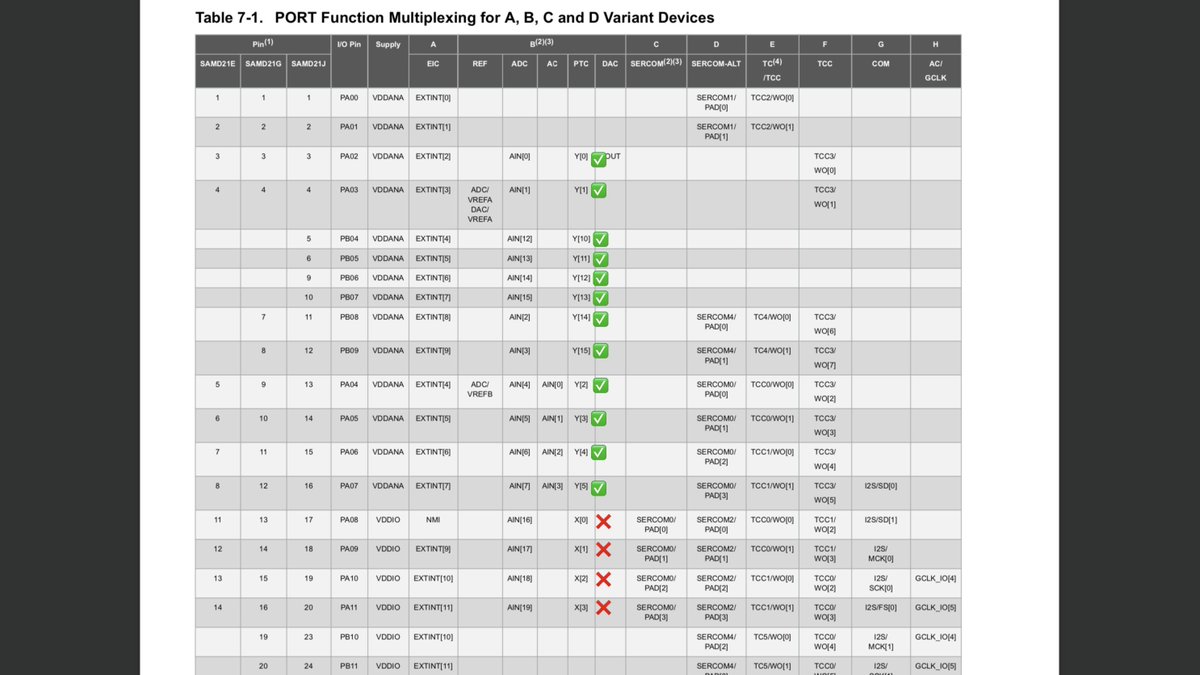
(original)
Replying to @tomfleet
Credit where credit’s due: this is using @Adafruit’s FreeTouch library (Ladyada’s awesome reverse engineering of the SAMD21 PTC), and these matrix designs were deeply inspired by @PatternAgents’ open source library of touch controls: http://www.patternagents.com/news/2013/11/24/eagle-touch-widgets-library.html
(original)
Replying to @helenleigh and @crowd_supply
This is so awesome, congratulations!!
(original)
Replying to @josecastillo
- This design isn’t meant to be final; I did it in a night using parts I had on hand, because having a thing in hand beats thinking about it hypothetically. But the files are here if you want to use any of these ideas; it’s “OSO-MISC-20-018 Memory Gadget” https://github.com/joeycastillo/Feather-Projects/tree/master/Totally%20Not%20Feather%20Related
(original)
Replying to @josecastillo
- I have not decided if this is the right form factor. Tall and skinny, but perhaps *too* tall and skinny? Problem is, rotating to landscape would render the gadget almost square, which also feels odd. (side note: I’ve affectionately nicknamed these designs “Bert” and “Ernie”)
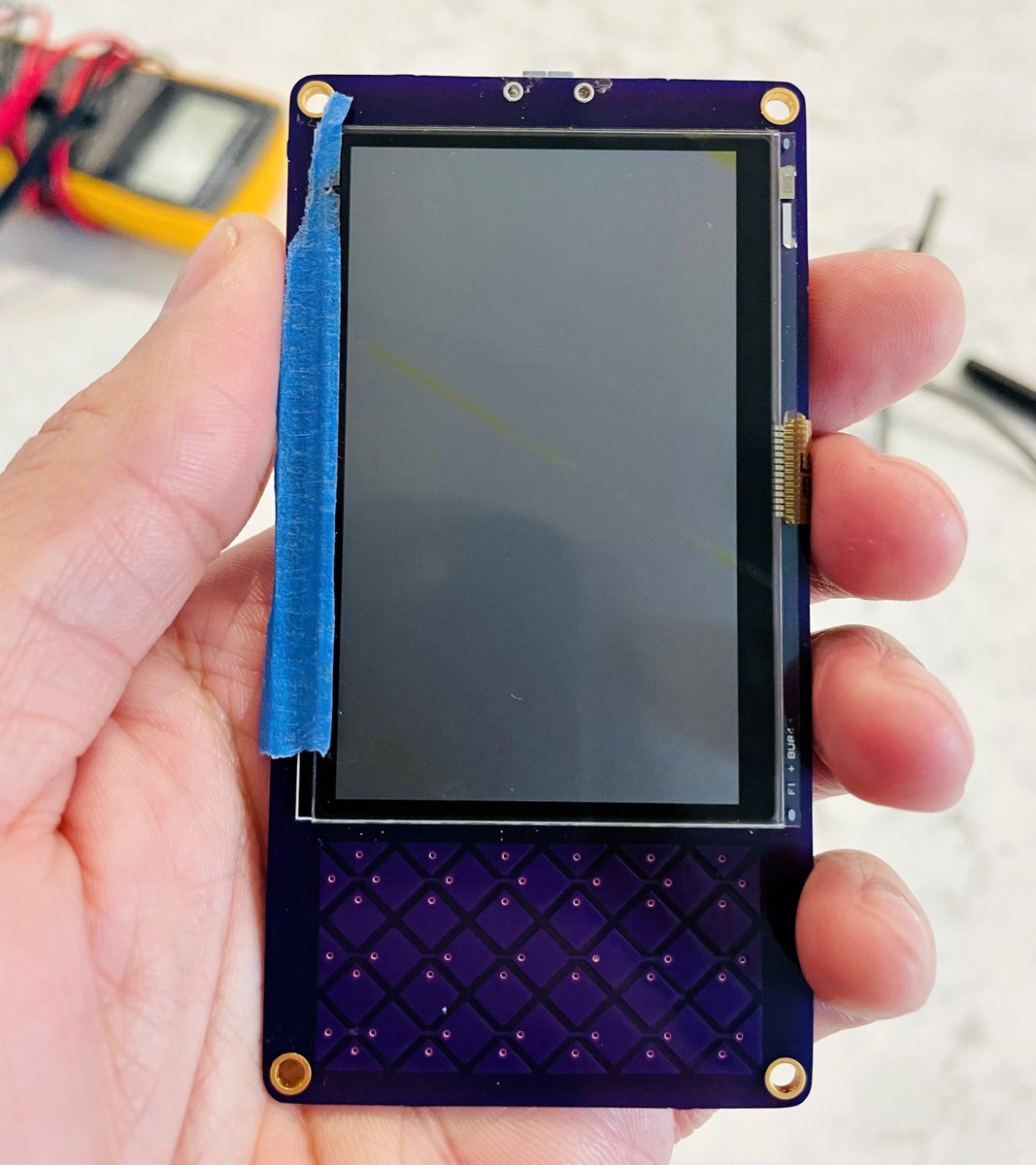
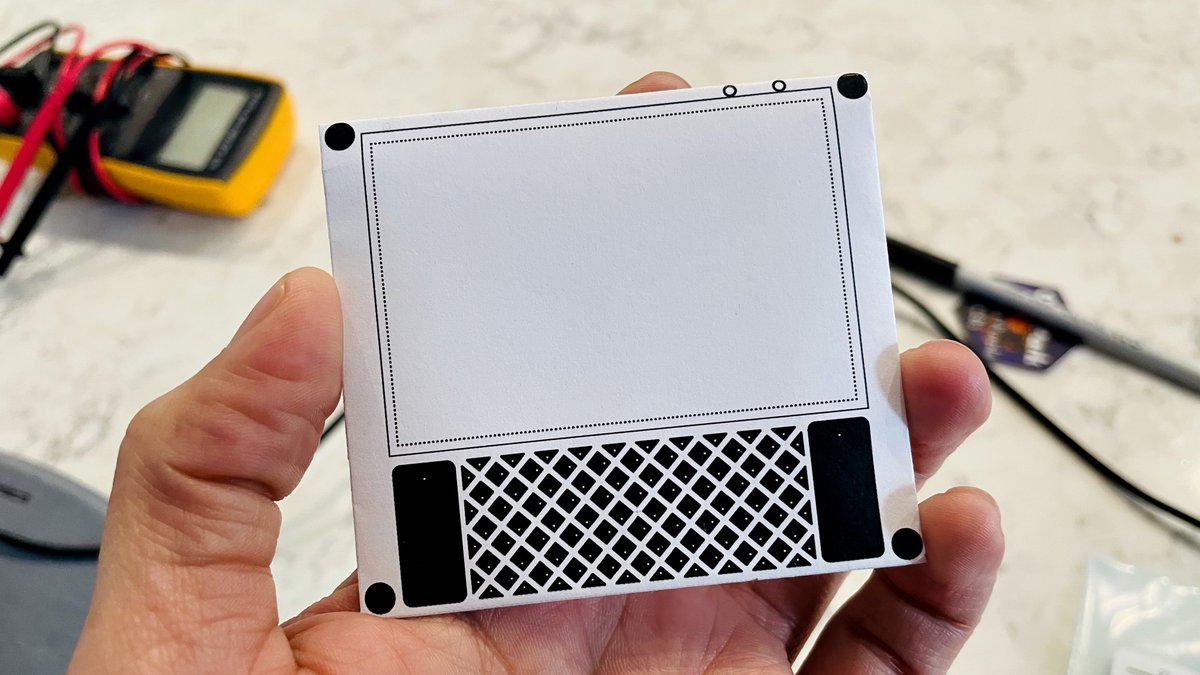
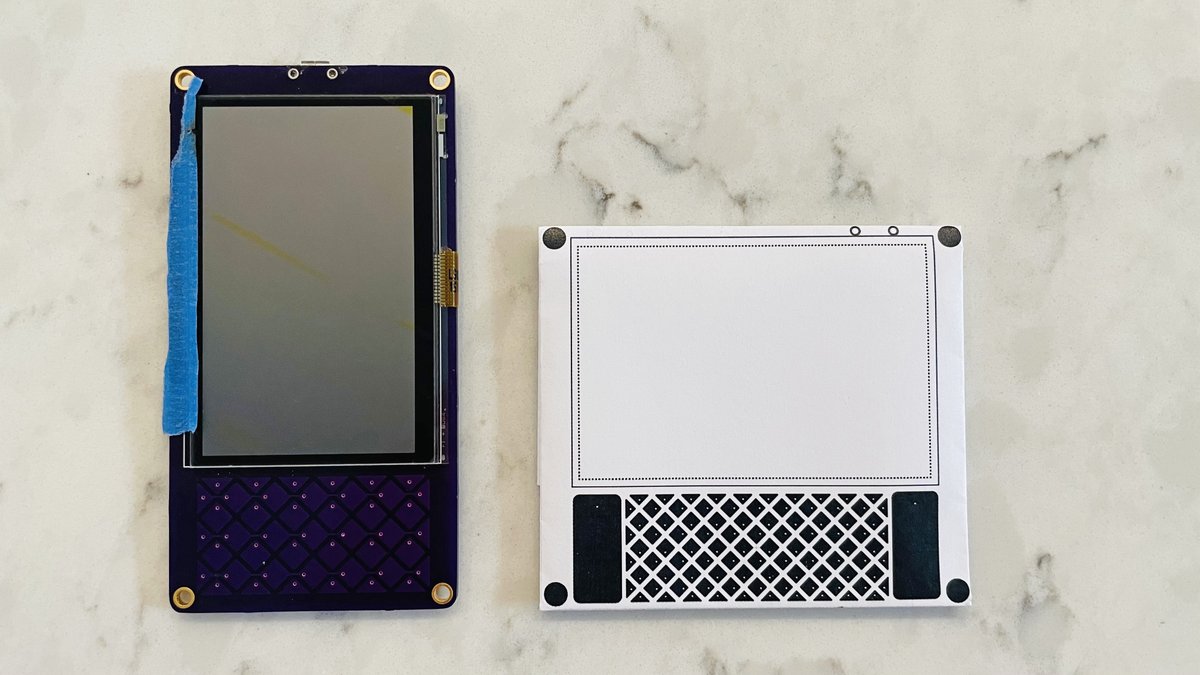
(original)
Replying to @josecastillo
2: whatever version I spin next, it absolutely must be in @oshpark After Dark; at right is an early test board done in that style. How cool is it that this matrix of plain old copper is actually a working touch panel? Attention should be drawn to it :)
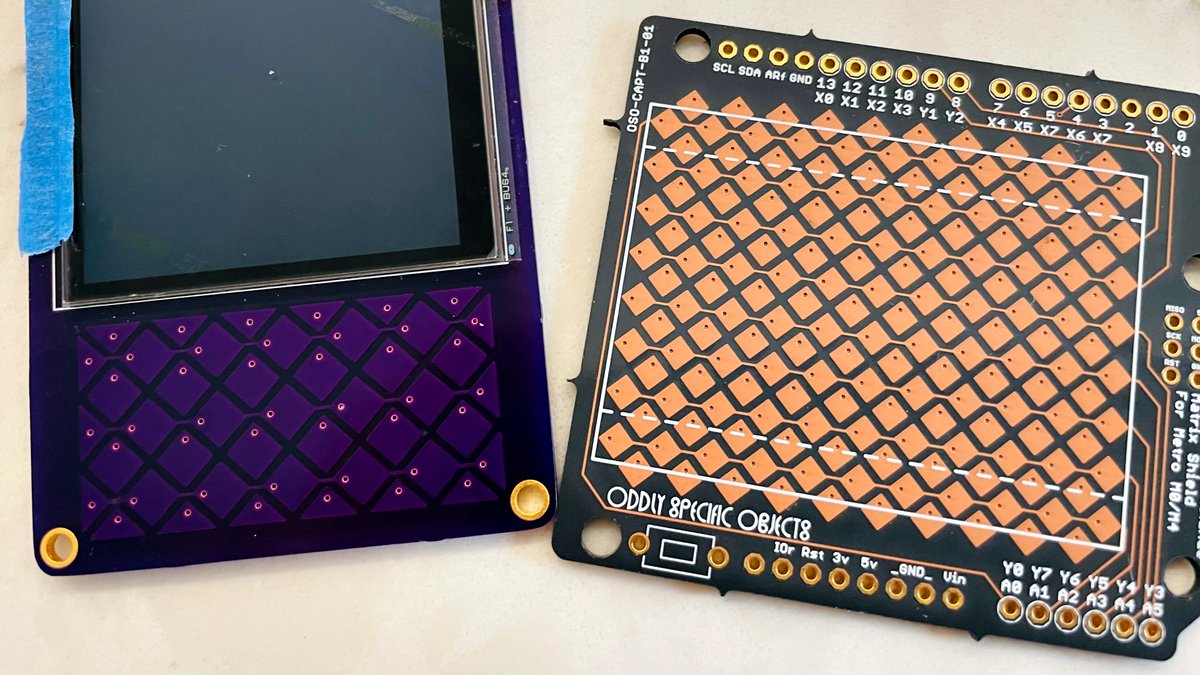
(original)
can’t do too much with this today because I have *actual* work, but, initial touch pad test! Some thoughts: 1, I need to respin this with a SAMD51. Chose the D21 for native touch, but my circuitpyui library won’t fit on it, and this is a perfect circuitpyui device. (thread, 1/?)
(original)
Replying to @kilobyte_ch, @RWB93174525, @adafruit and @RWB93174525
ordered some of the raw displays for a canceled project, so he’s selling them on the cheap to makers and hackers :)
(original)
Replying to @fast_code_r_us, @RWB93174525 and @adafruit
I have EXTMODE and EXTCOMIN wired to pins in case I want to try it some other way, but the Adafruit CircuitPython driver uses the software toggle, so for now I’m doing it that way.
(original)
Replying to @josecastillo
It’s only got half the parts and it’s bodgier than I’d like, but still, not bad! I’ll have more to say about this one tomorrow; for now, thanks @RWB93174525 for these awesome $10 Sharp memory displays, and @adafruit for your breakout PCB, which I cribbed notes from extensively :)
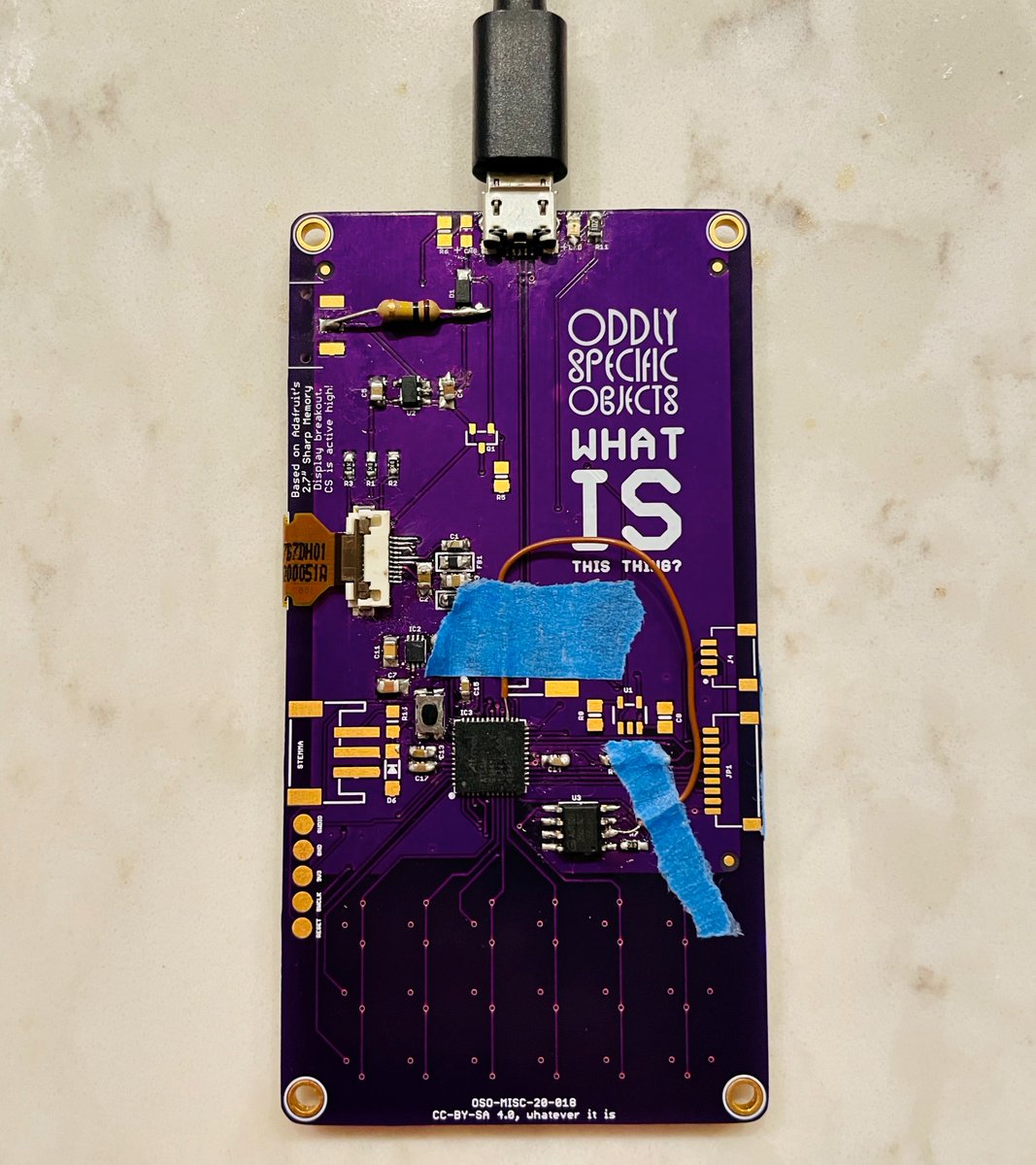
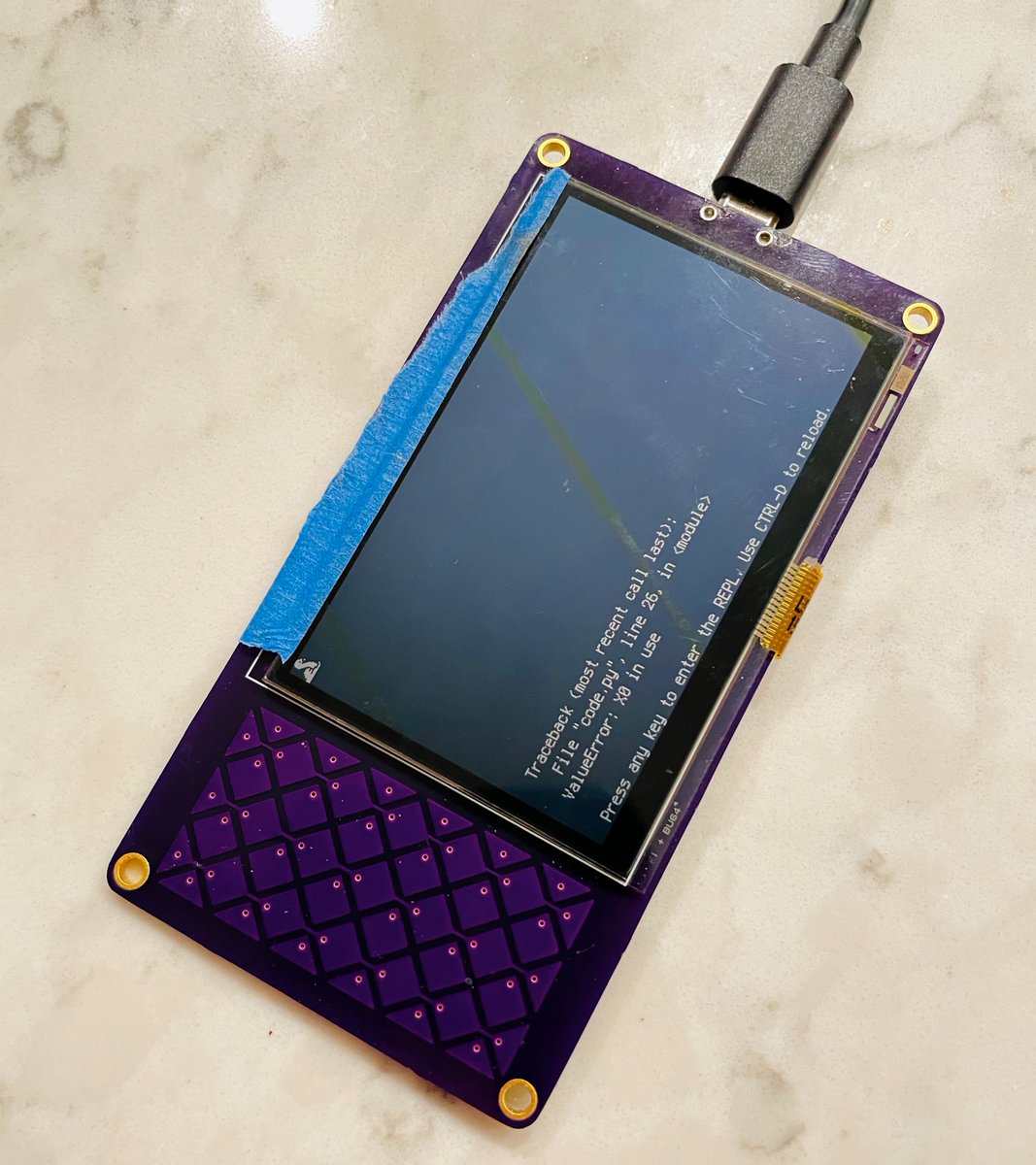
(original)
Replying to @josecastillo
actually, I’m not “documenting” this build per se, but I did video this one just in case it looked cool, and it shows the process pretty well! (note: I did blast the chip with a little more hot air after that first cut, but trimmed it for time)
(original)
OK, I lied, I’m assembling this thing first. Y’know, I’m usually very precise about things. I usually use solder stencils. Especially with QFN parts. Still, it absolutely boggles my mind how well this method works. Smear paste; blast with hot air; clean up. No one will ever know.
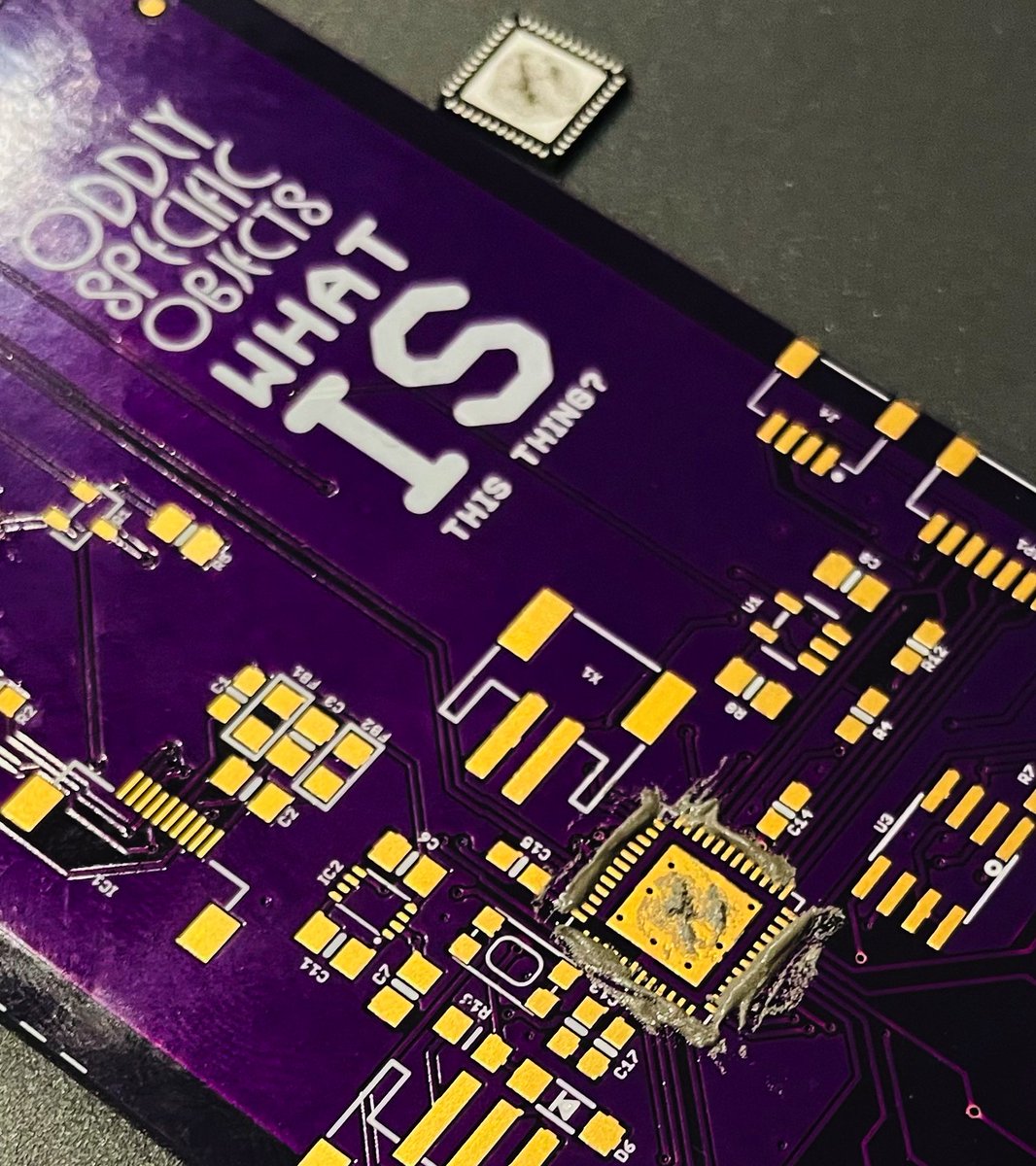
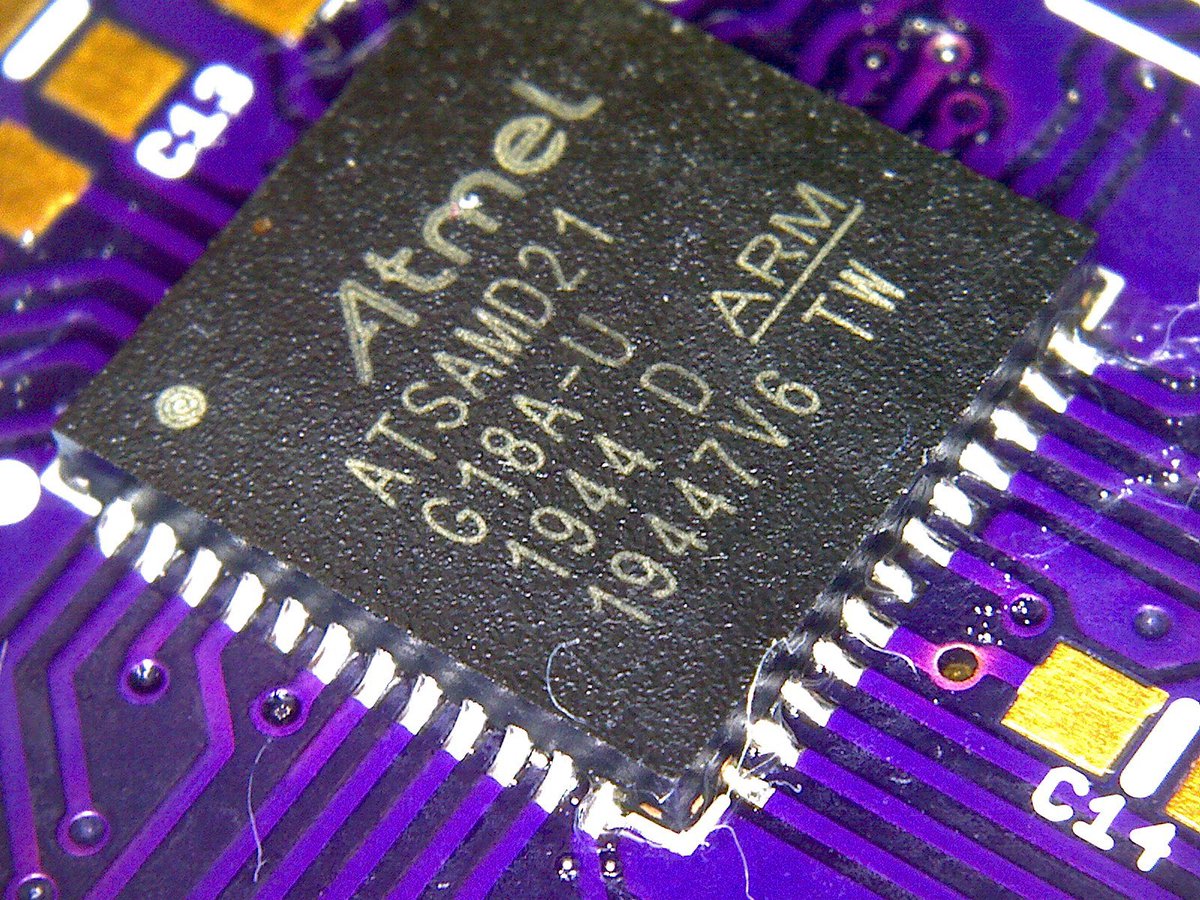
(original)
Replying to @pdp7, @oshpark and @doctorow
It was the perfect excerpt for this particular gadget!
(original)
Replying to @MichaelStal and @oshpark
The original SAMD51-based version (linked) is in its final form. Thing is, I realized that in designing it with so many bells & whistles I probably made it more expensive to manufacture than I intended. This new board tests a simpler, lower cost variation. https://www.tindie.com/products/joeycastillo/the-open-book-pcb-bare-pcb/
(original)
New PCB’s in from @oshpark, and they look great! Three boards in this order, but I’m building this Open Book prototype first. Also revived a tradition from last year: hiding a relevant quotation behind the screen. This time, it’s a short excerpt from Cory Doctorow’s “Radicalized”
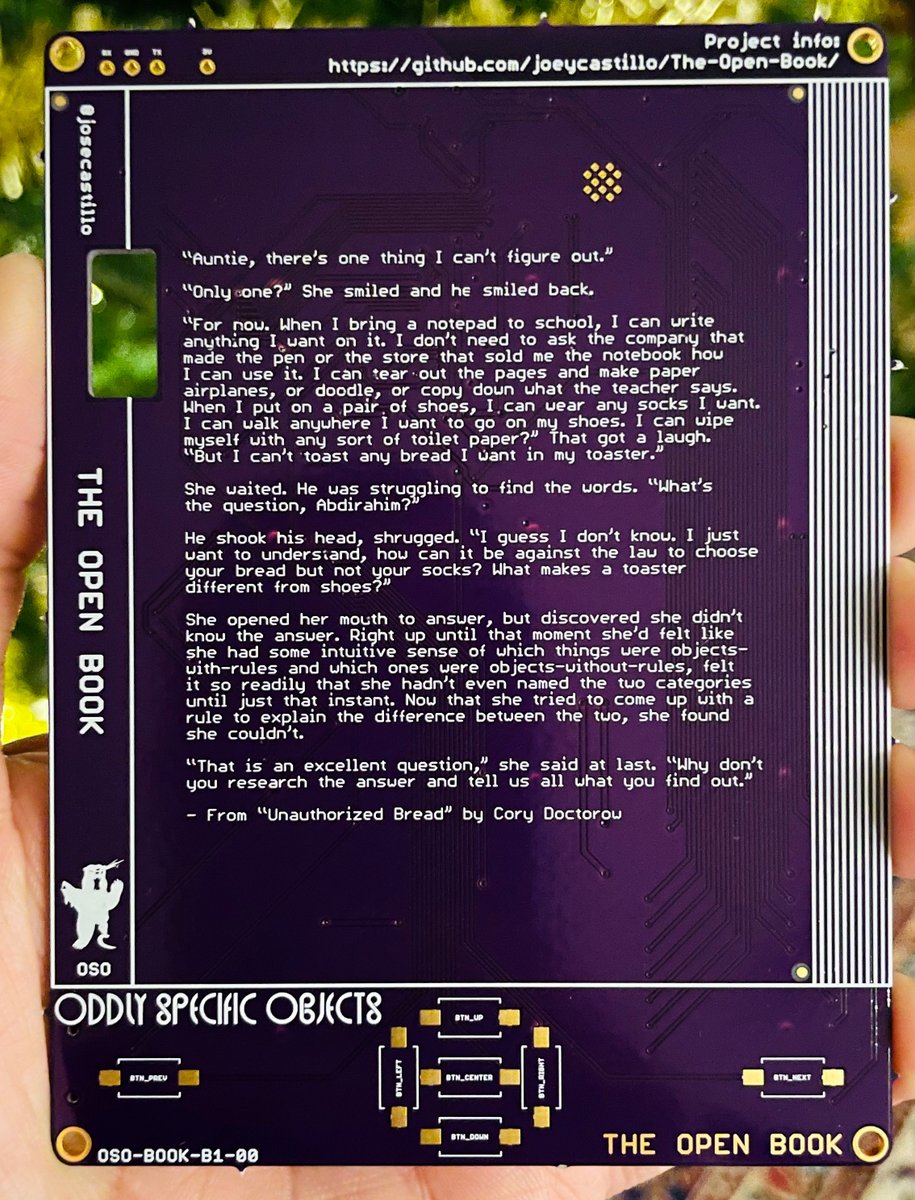
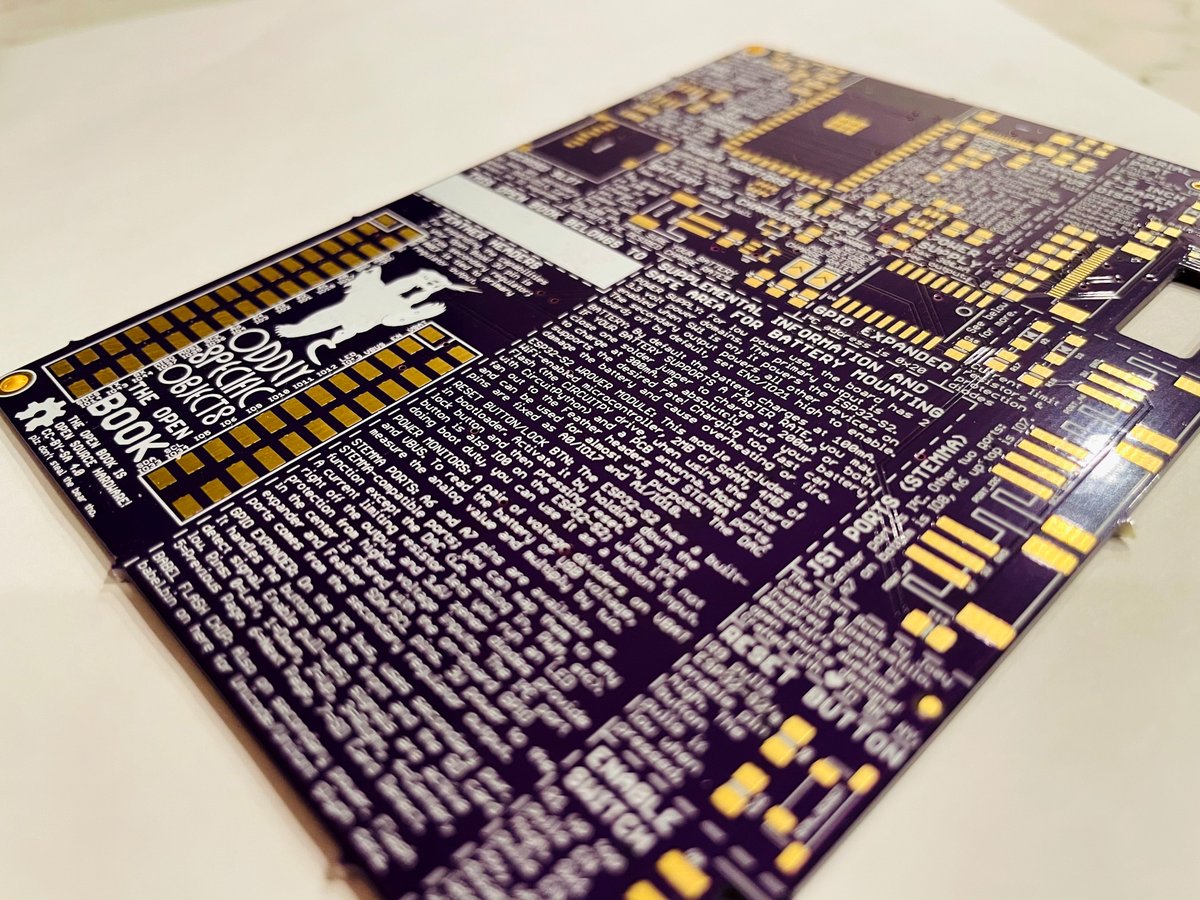
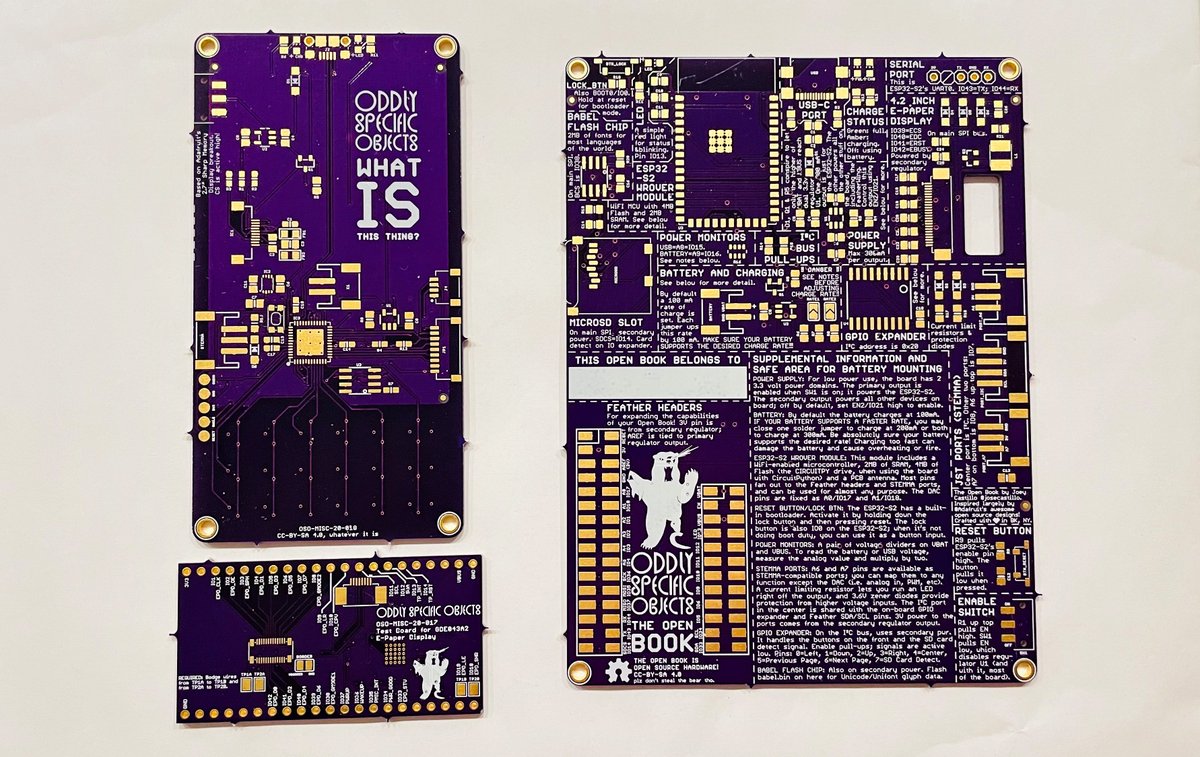
(original)
Replying to @theavalkyrie, @_nitz and @tofieldya
our house has a very nice HP color laser printer… which I have to reboot every time I want to print something, or my computer will fail to recognize it. somehow my every interaction with a printer calls to mind the folly of mankind.
(original)
I’ve designed what I think is a smarter version of the Sensor Ring main board; now I’m just rummaging around my parts box, brainstorming small rings or bracelets or wearables that I can build with what I have on hand. At least a half dozen ideas here.
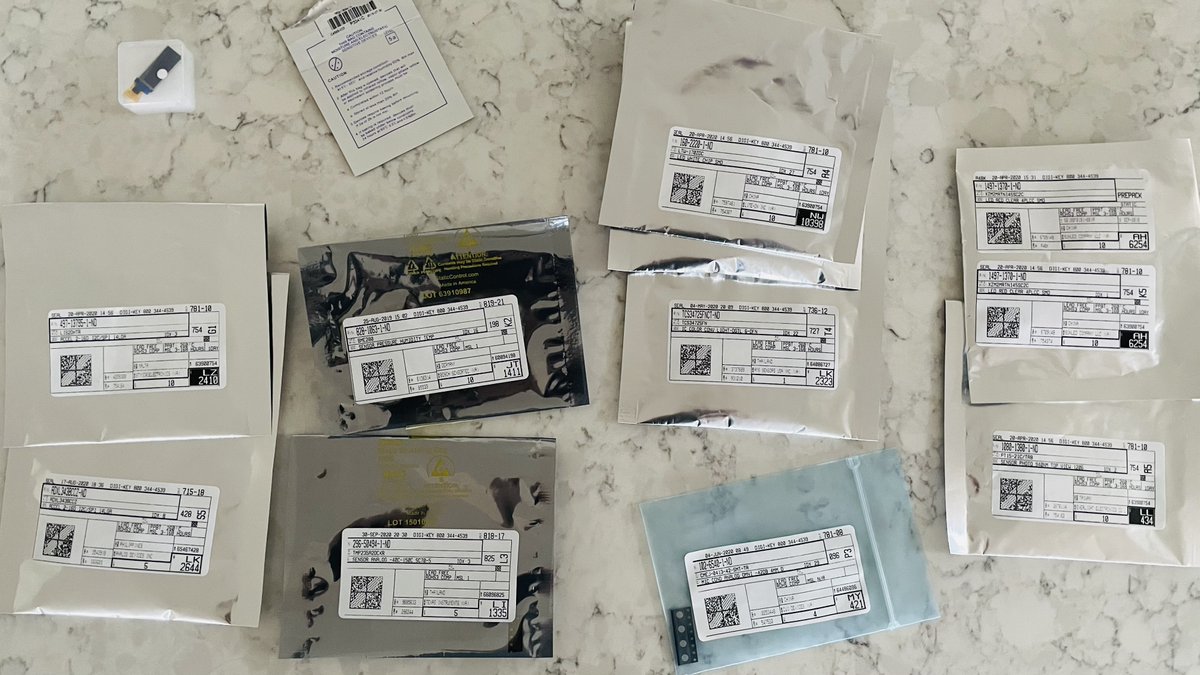
(original)
Replying to @josecastillo
there is one big hole in the story: even if you take it as read that aliens exist, and that the Galactic Federation has been in secret talks with the US and Israel, it’s not even remotely believable that they were able to stop Trump from tweeting about it.

(original)
my 2020 bingo card is now complete. https://twitter.com/Jerusalem_Post/status/1335948000707928066
(original)
sometimes the projects i choose to work on feel like they’re the ramblings of a crazy person. lately, though, they at least feel like the well-designed ramblings of a crazy person.
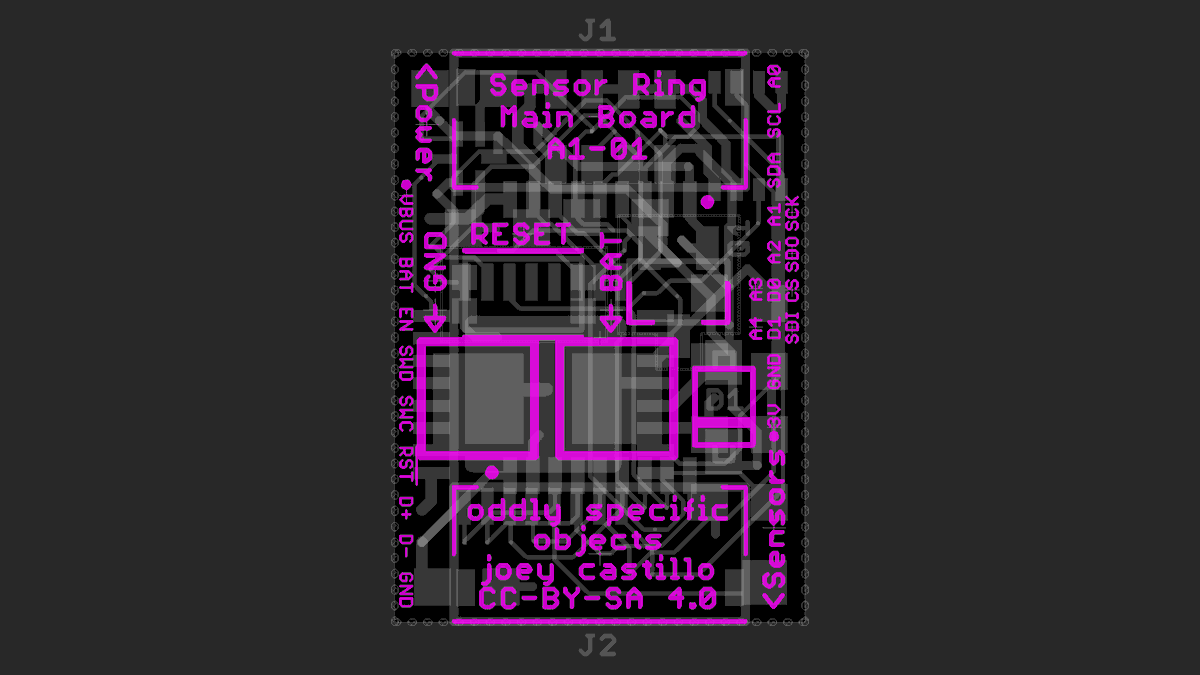
(original)
Replying to @solderparty and @tindie
not quite a full-fledged project yet, but I’m in the process of adding Keyboard FeatherWing support to circuitpyui! The framework still doesn’t have a proper text field class, but it will soon :)
(original)
yay! circuitpyui got mentioned in tonight’s Python on Hardware segment! Also had a chance to drop by Show & Tell with a fun demo: a menu-based chore tracker for your MagTag. Code here; circuitpyui is still very WIP, but you can make some fun stuff with it! https://github.com/joeycastillo/circuitpyui/blob/main/examples/MagTag/chores/main.py
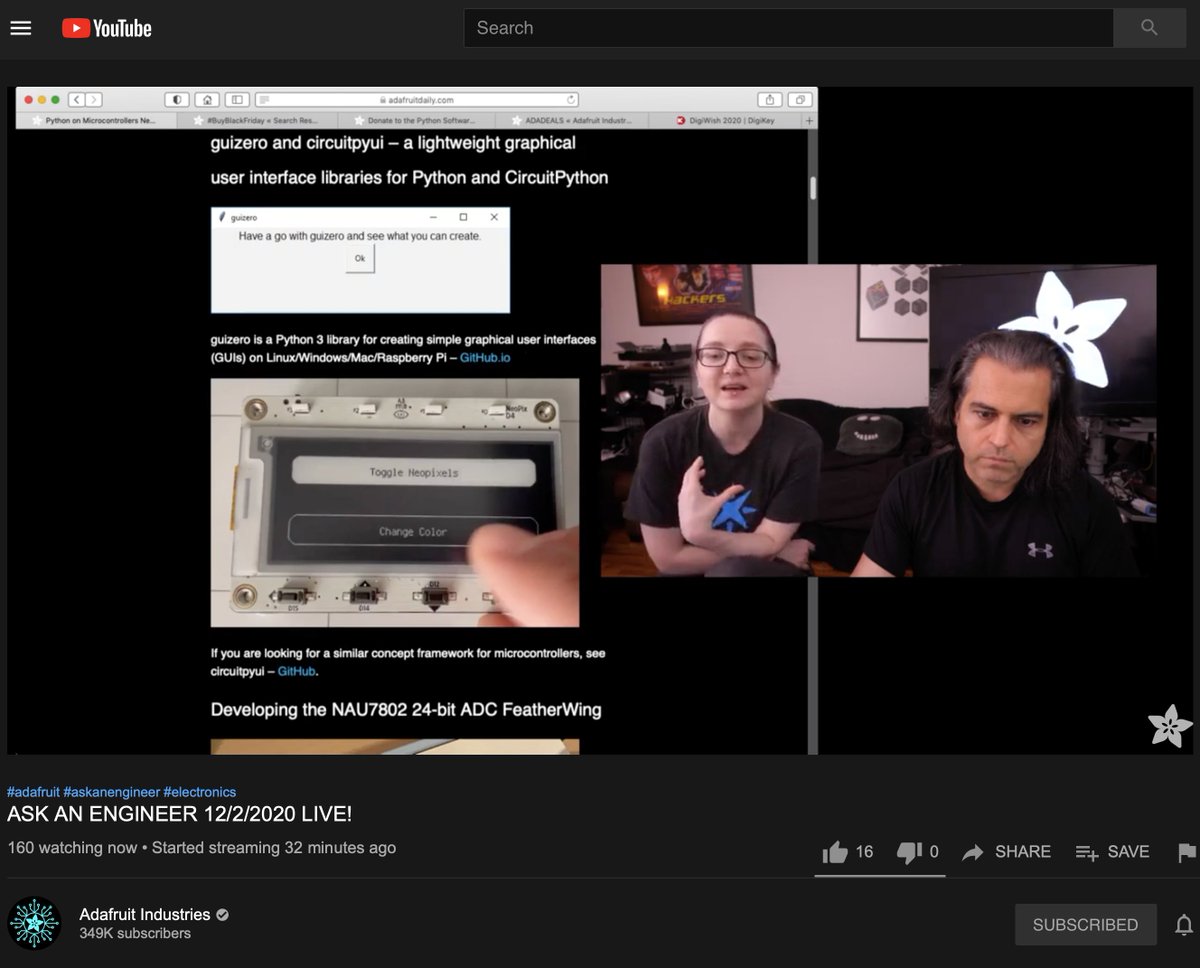
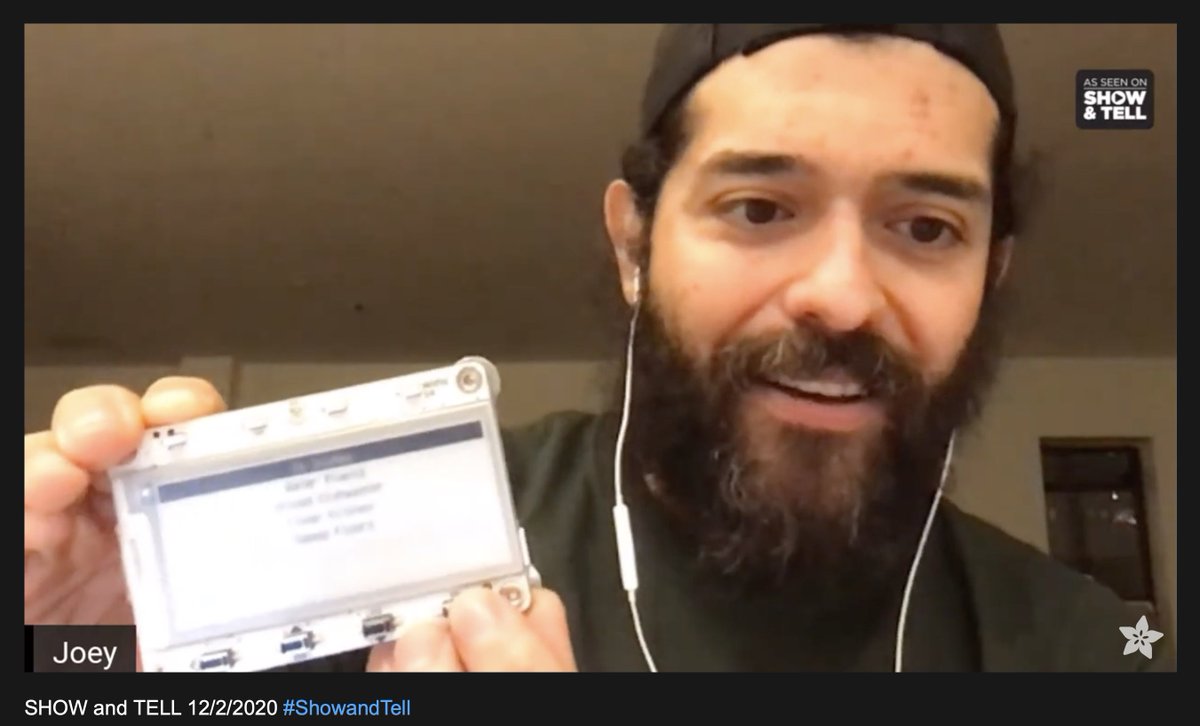

(original)
Replying to @arturo182
this era gave us some of the strangest artifacts

(original)
i now own a piece of history

(original)
RT @tarahaelle: I can’t help but admire so much about Fauci and marvel at his communication. The man truly is a national treasure. He does…
(original)
i find the layers of this pcb very soothing.
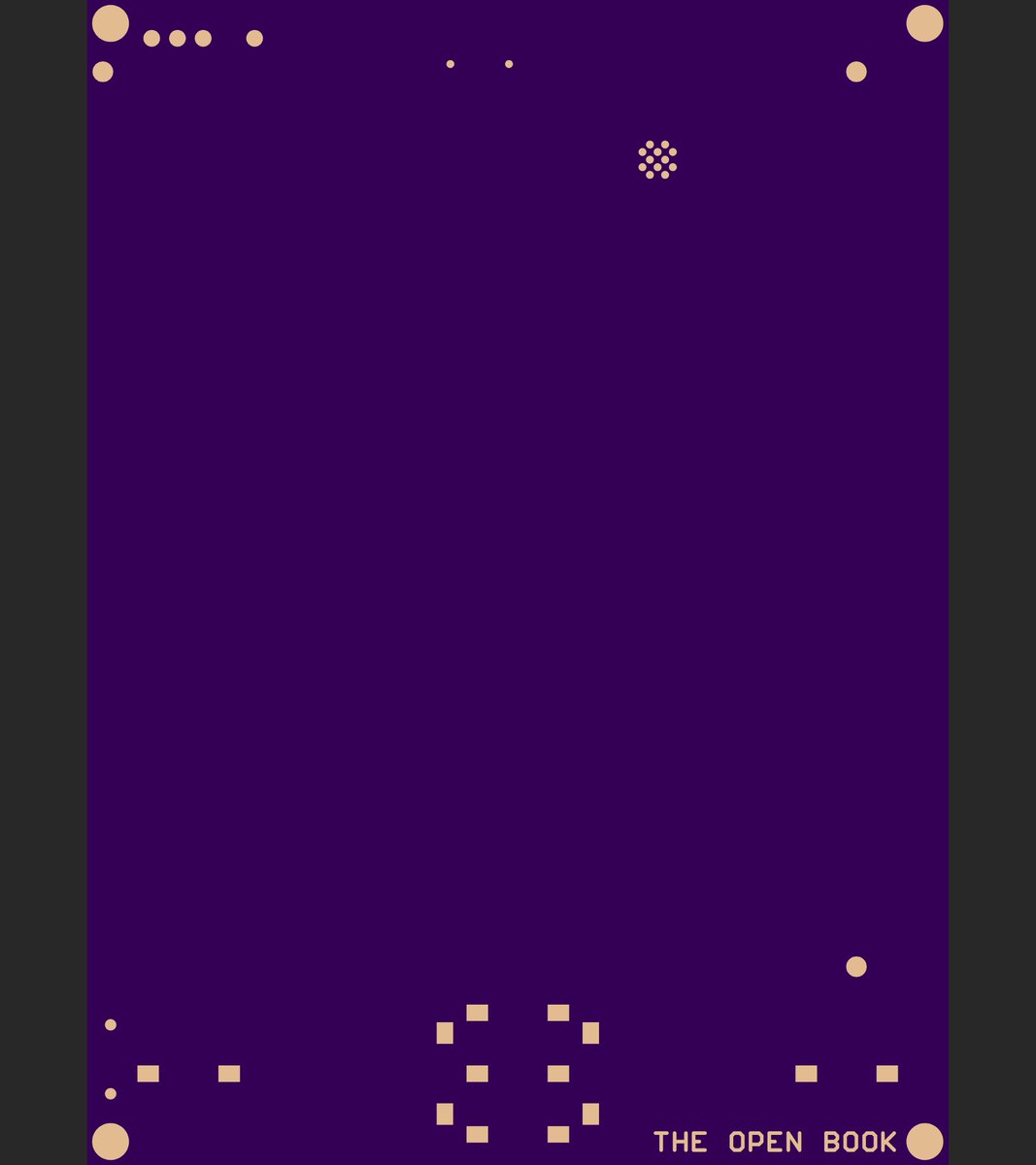
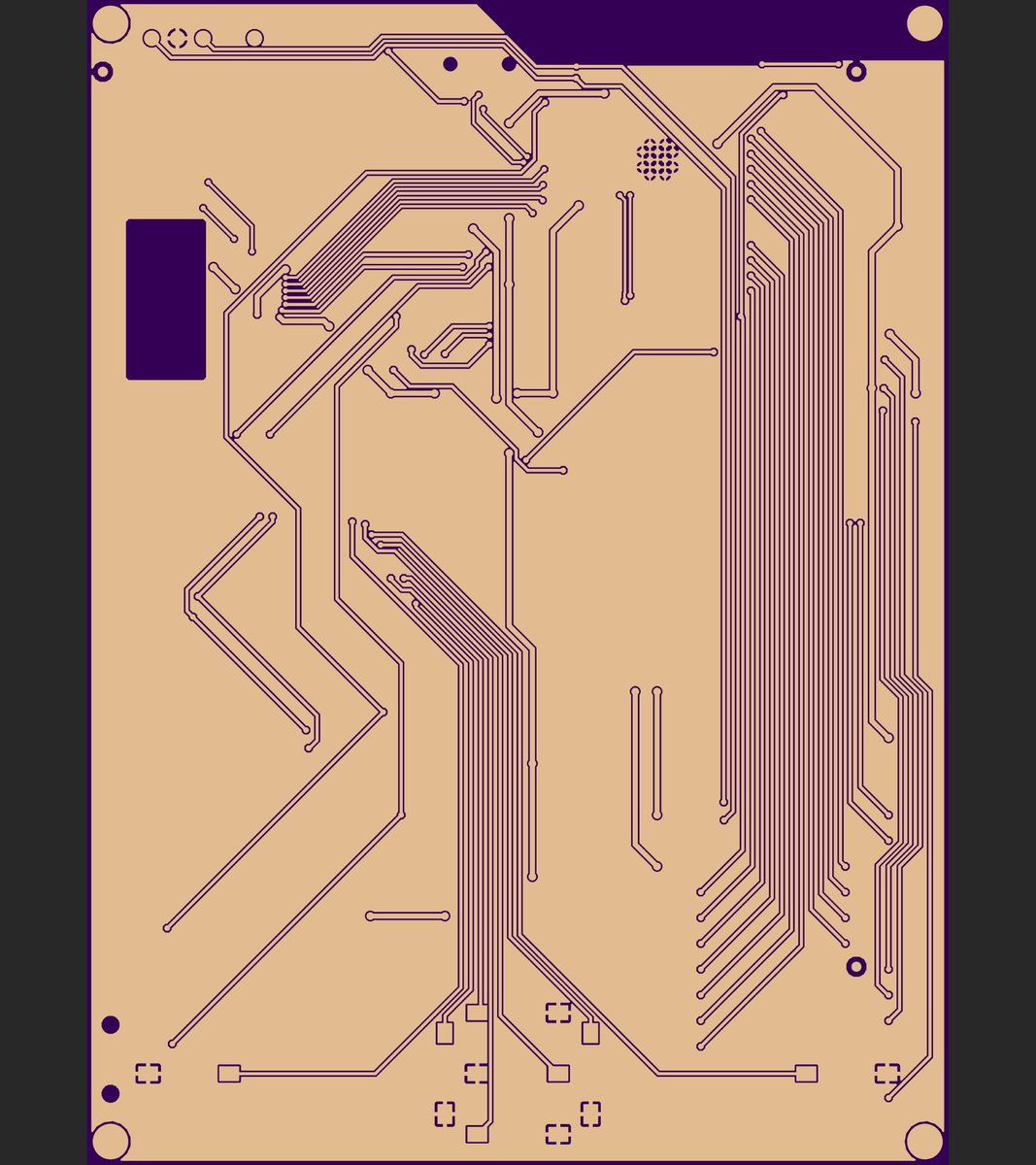
(original)
Replying to @derekcaelin
Oof, I don’t know offhand. They were out of stock for at least a month at the beginning of the year. I need to email them anyway this week, I’ll let you know what I find out. In the meantime Waveshare has the same display in stock (costs a little more tho) https://www.waveshare.com/product/displays/e-paper/epaper-2/4.2inch-e-paper.htm
(original)
Replying to @josecastillo
other than that I made traces wider and spaced parts further apart, added USB-C (finally!) and got rid of all the through-hole parts, so it’s an all surface-mount design. But it’s not built yet. I have all the parts here though, and I’m hoping to get it sent off to OSH Park soon!
(original)
Replying to @josecastillo
removing a bunch of parts also let me fix something I didn’t do well the first time: battery keepout areas. The first design was limited to using a ~400 mAh battery because I didn’t plan a large safe area for the battery. with better planning, this has room for 4-6x as much power
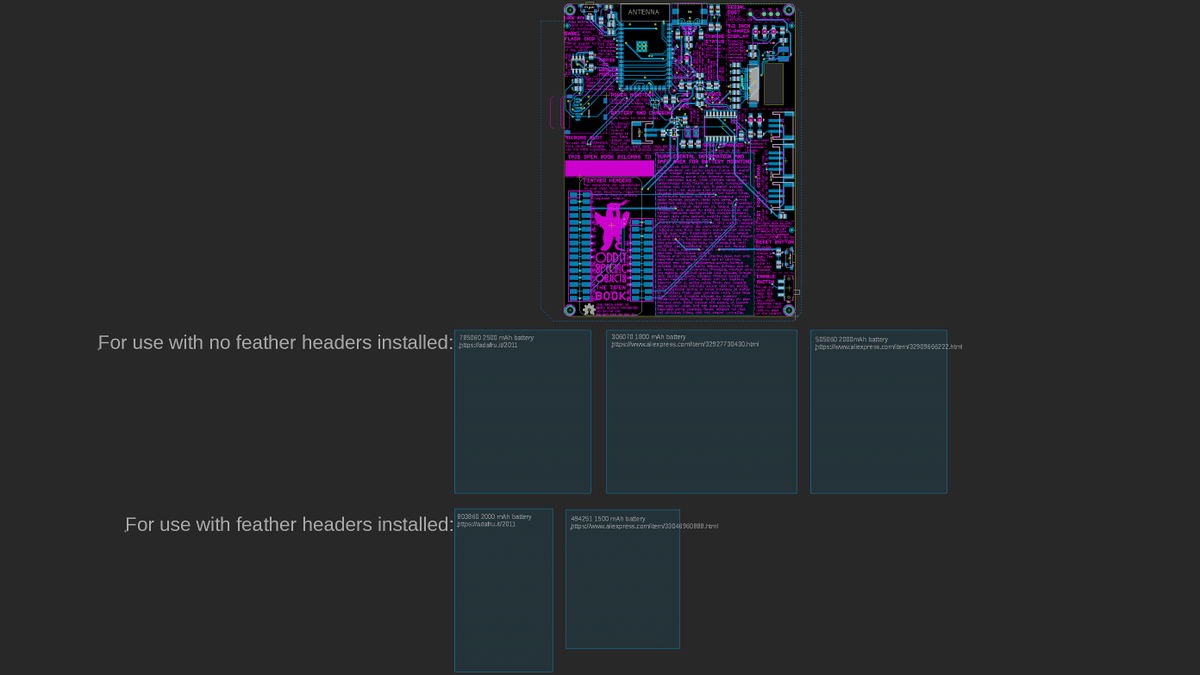
(original)
Replying to @josecastillo
another part of this had to do with realizing what the board already did well: extensibility. It’s a Feather. Why have a headphone jack if the user can add an MP3 player wing? Or a realtime clock or a GPS? It doesn’t NEED to do everything bc folks can extend it for their use case
(original)
Replying to @josecastillo
the biggest lesson: less is more. With the initial Open Book design, I threw the kitchen sink at it: headphone jack, microphone amp, Neopixel, you name it. But every line on the BOM adds cost, and I want it to be as affordable as possible. So this version removes a lot of stuff.
(original)
Replying to @josecastillo
state of the prototype: PCB edition. Still need to write some explanatory silkscreen text, but this is my attempt to 1, make an ESP32-S2 based Open Book; 2, apply some of the lessons learned this year; and 3, design a variant that can actually reasonably be manufactured. (cont’d)
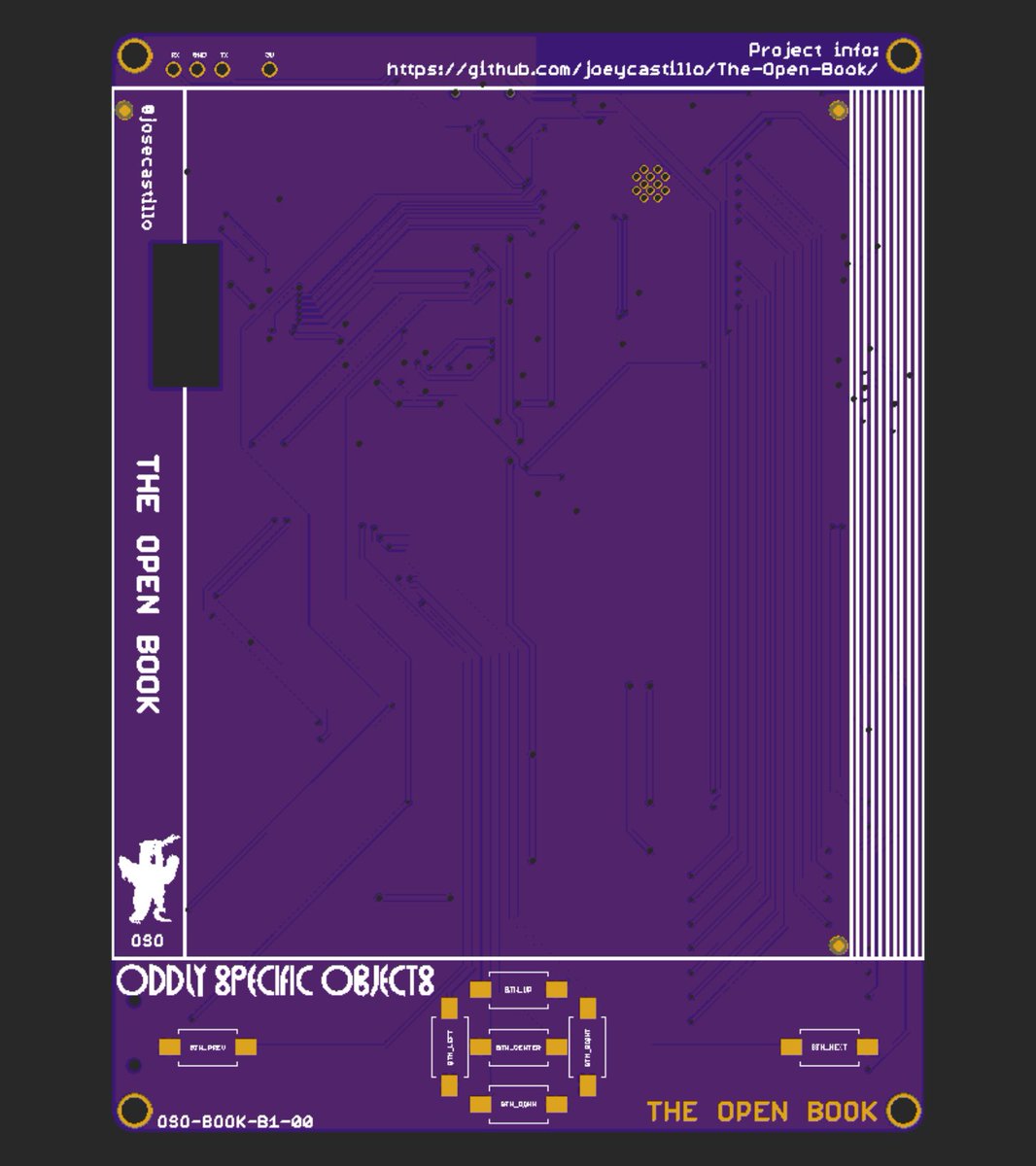
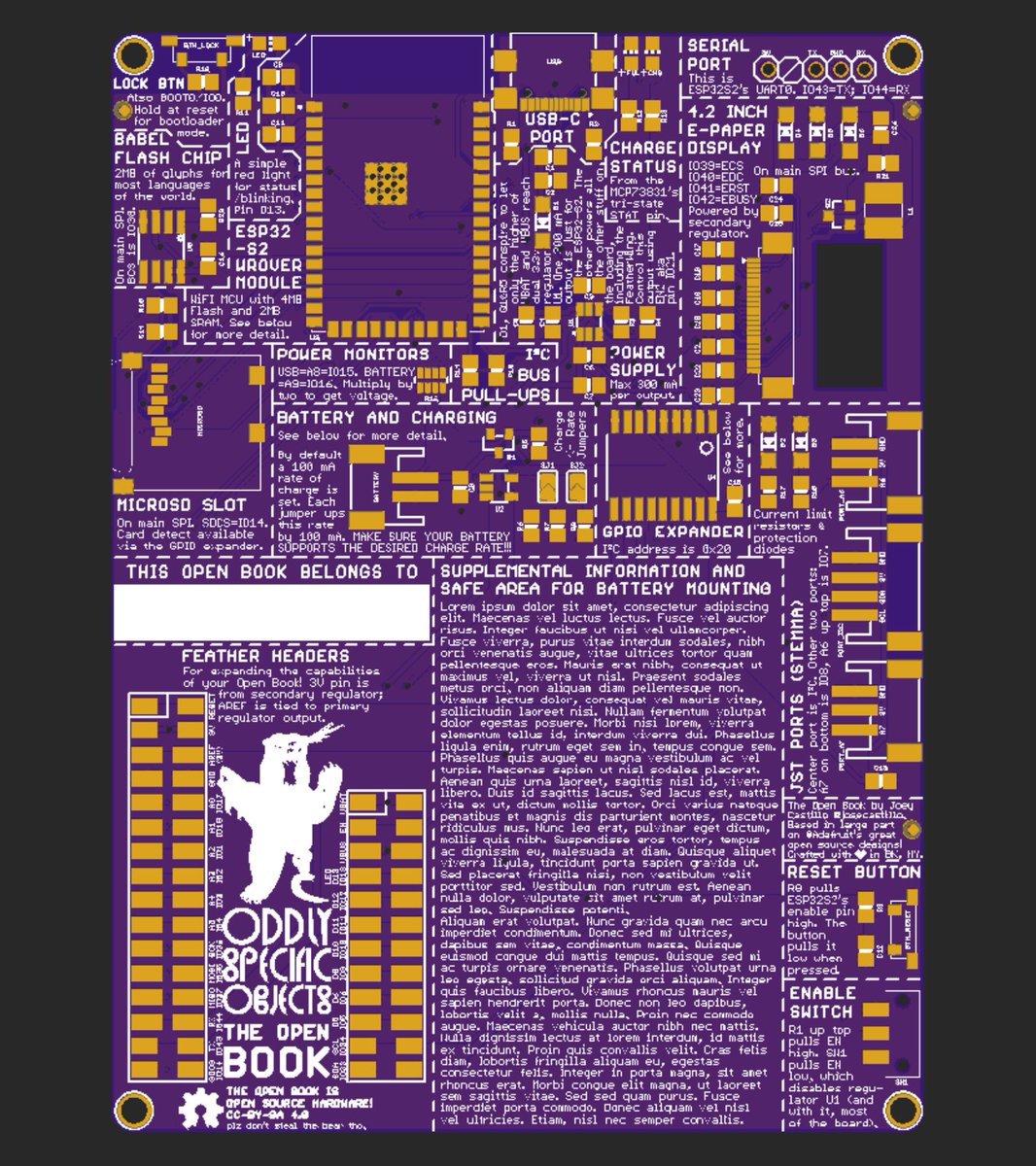
(original)
Replying to @josecastillo
after much wrestling with the prototype, the screen works as expected. Pretty sure the glitch was related to my pin selection for a couple of signals, so I’m glad I tested hard and figured it out before ordering a PCB :)

(original)
Inaugural run of the campfire lantern! With all my additions, I wasn’t able to fit the flashlight back in; still, I kinda like the clear window into the inner workings of the gadget. And the warm light, while not actually warm, makes this rooftop feel less chilly. Anyway. Cheers!
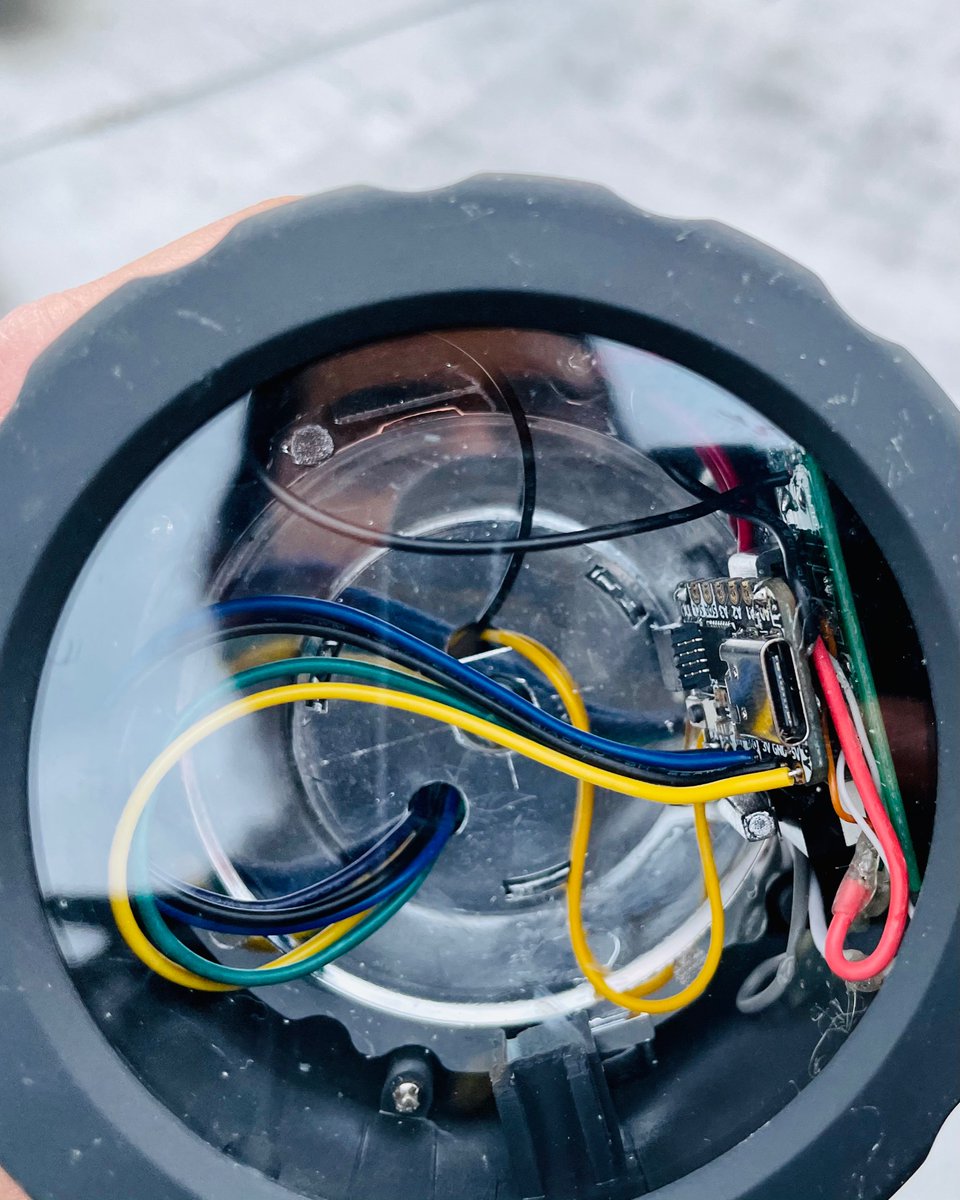
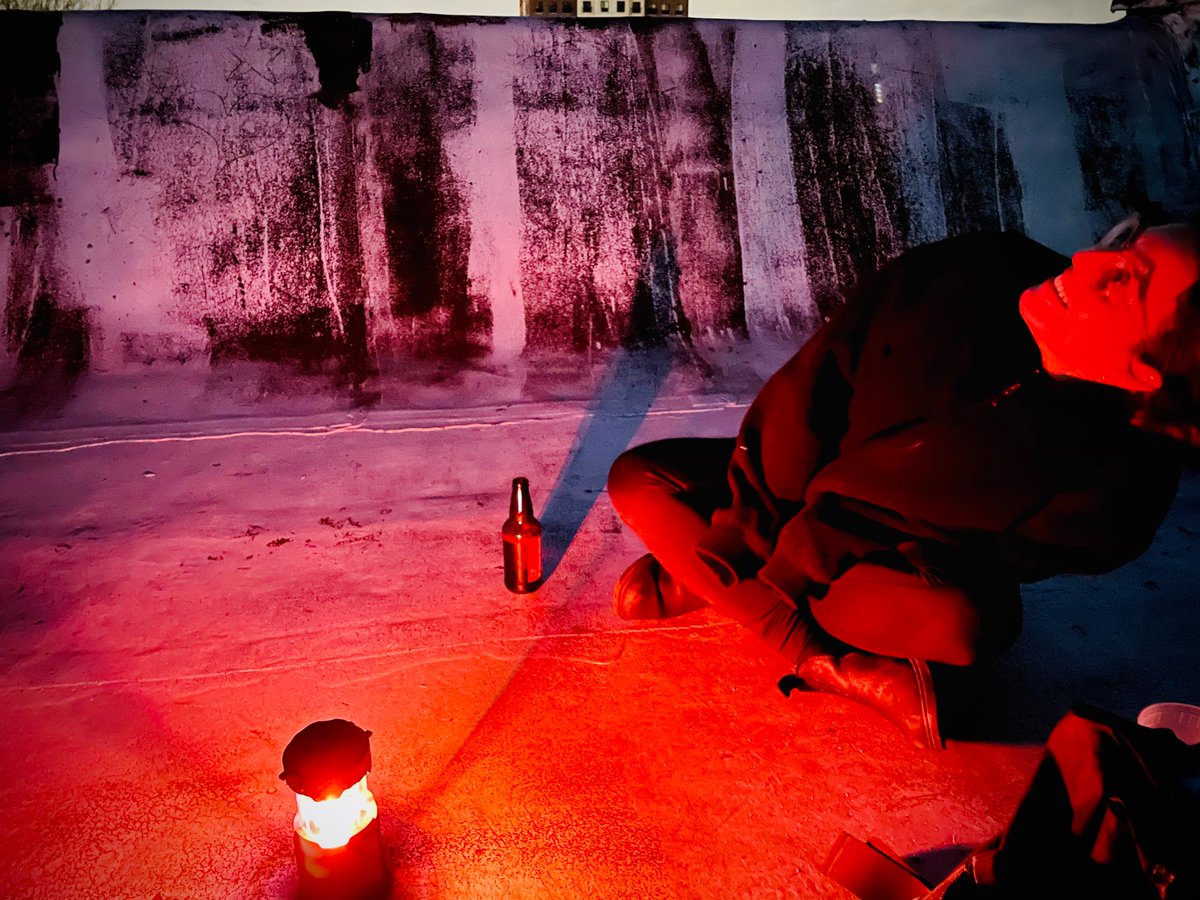
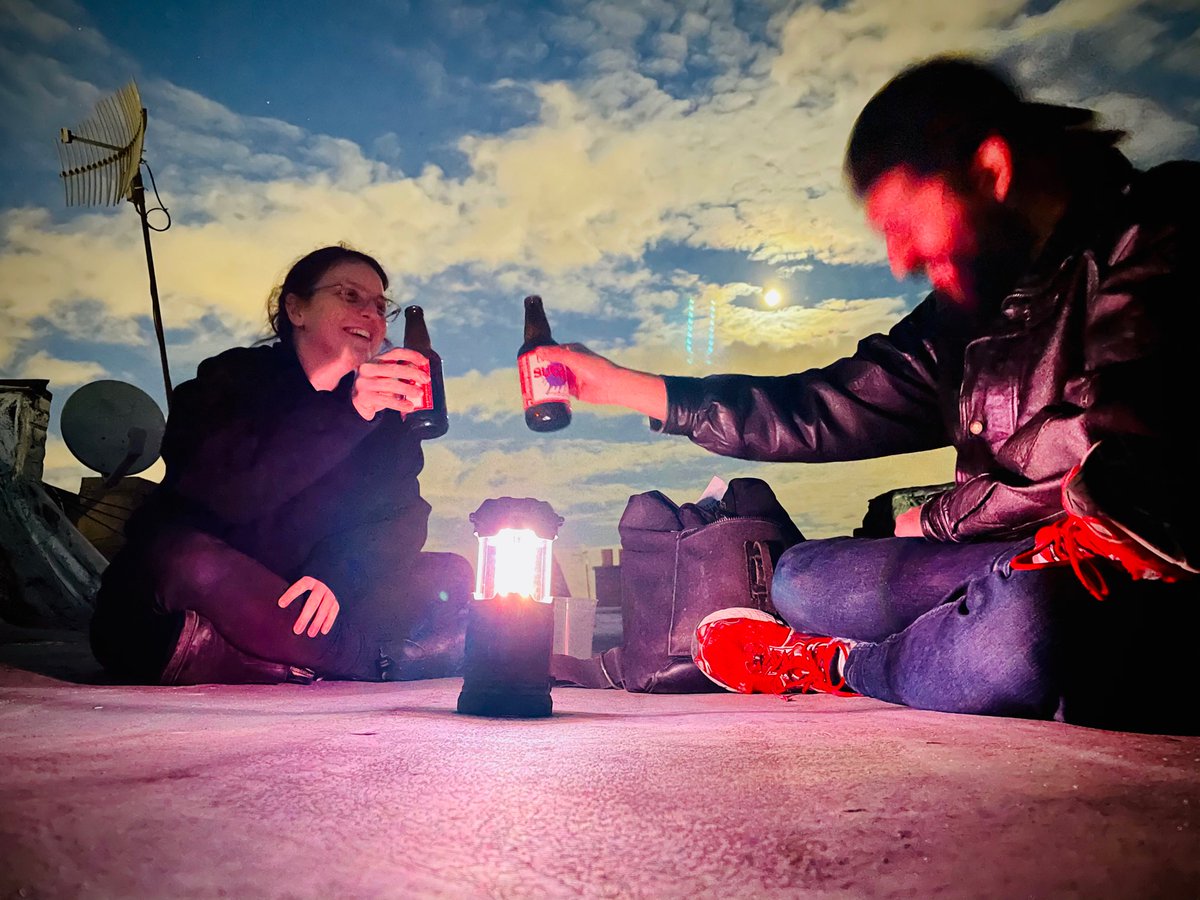
(original)
Replying to @bateskecom and @timonsku
You have a problem. You think “I’ll use machine learning algorithms!” Now you need a machine learning algorithm to understand how many problems you have.
(original)
Replying to @RWB93174525
I would definitely buy a few of those! DM me?
(original)
Replying to @bitshiftmask
It does feels that way, since I can still see the signals going to the display. Alas I’m pretty sure I’m waking it up; there’s a power up command in the startup sequence, and even when I remove the power down command it happens. (It’s also the same driver I use on other devices)
(original)
Replying to @josecastillo
but now it’s time to clear off the dining room table and switch to thanksgiving dinner mode
(original)
Replying to @josecastillo
state of the prototype: almost everything works. facing an issue where I can’t refresh the screen more than once per run in circuitpython. can’t get it to refresh at all in arduino. I sense this is a software issue; still, can’t send the board to get made until I figure this out.
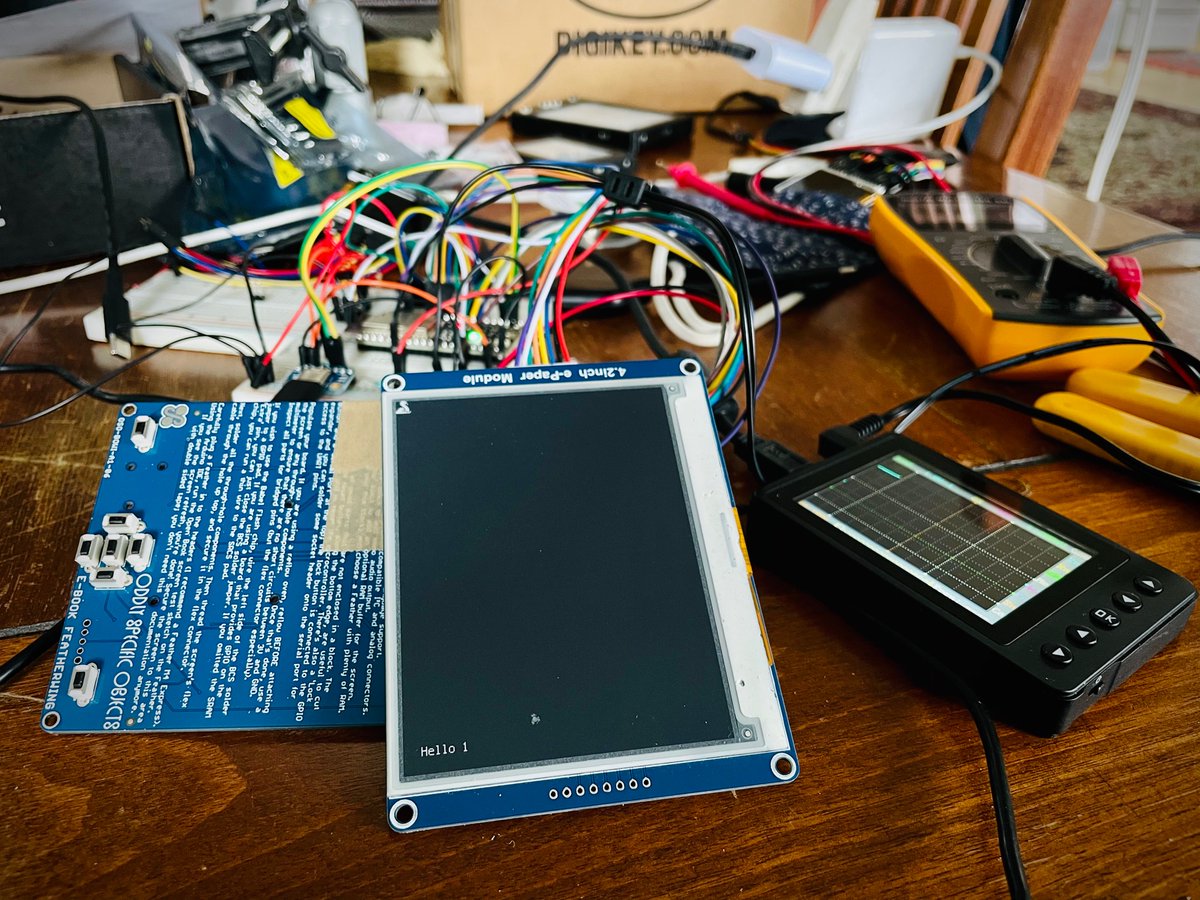
(original)
Replying to @msx80
At this time, just plain UTF8 text. In the beta version I have now it needs to be converted to a special format first, but the goal is to support plain .txt files soon. More complex formats, not sure yet! EPUB *might* be possible, it’s all just a question of writing the software.
(original)
Replying to @josecastillo
a series of tubes
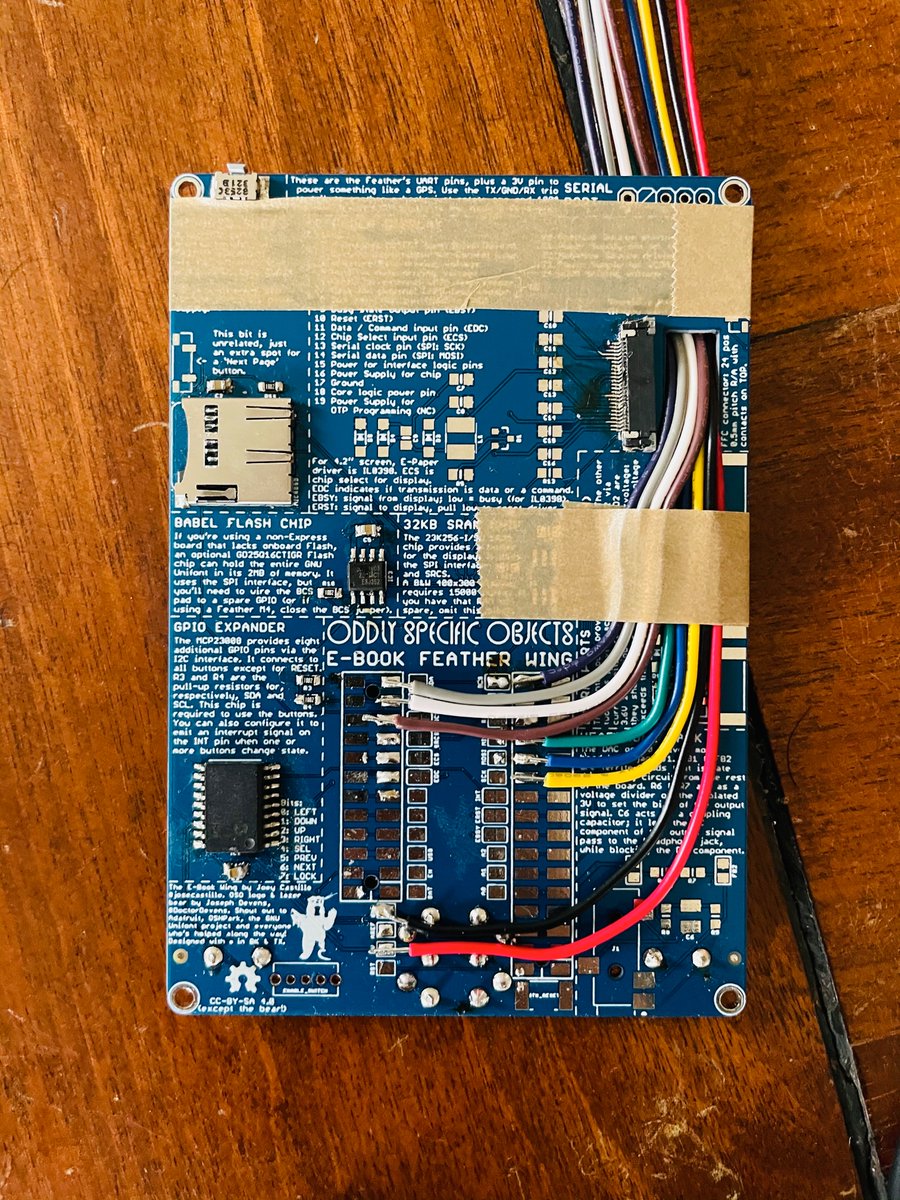
(original)
I can never quite get over how stable e-paper is. Prototyping a new gadget today with this old display module. It’s still showing the last short story I read on it, way back when I was brainstorming the Open Book, maybe a year and a half ago, before the project even had a name.
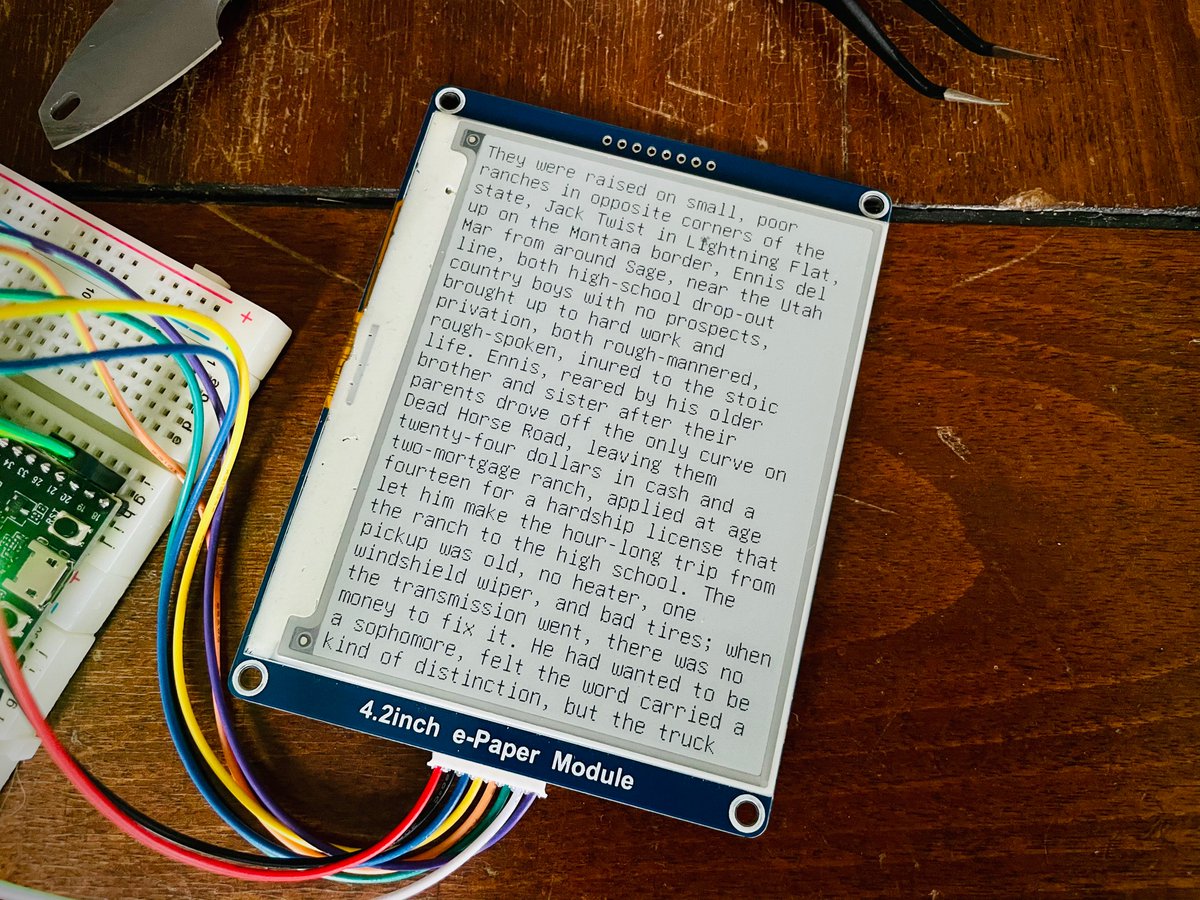
(original)
Replying to @josecastillo
coda: the box has landed.
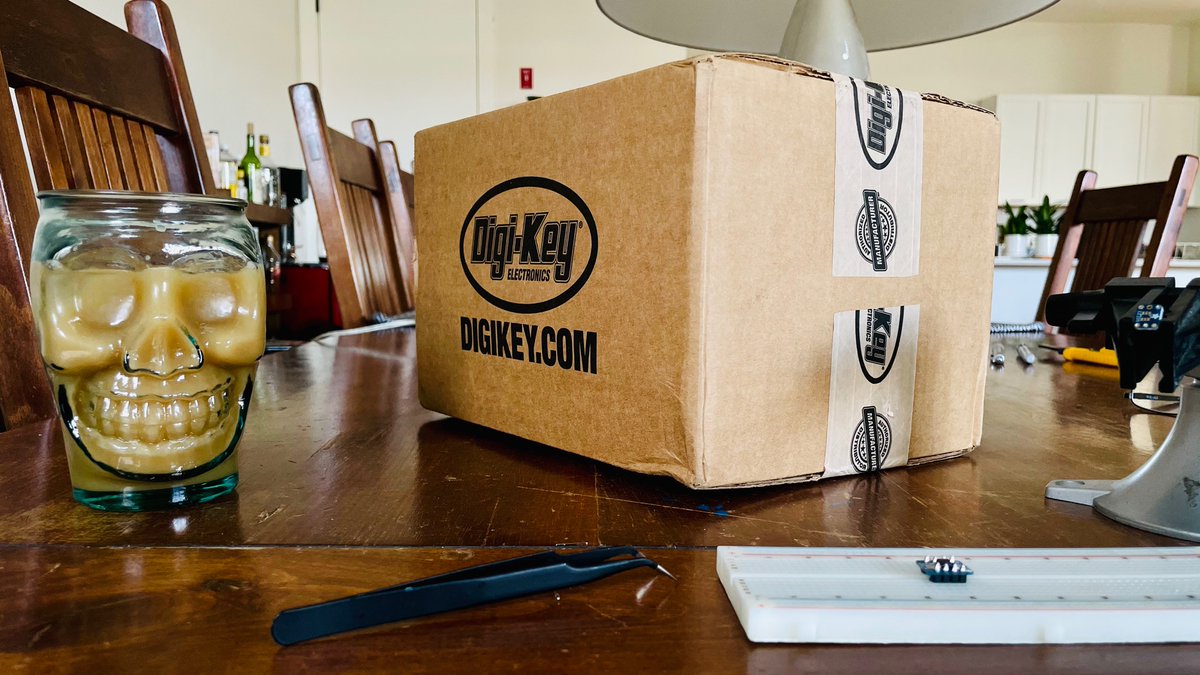
(original)
RT @ProgressBar202_: 2020 is 90% complete.

(original)
Replying to @josecastillo
Mostly though I want to perfect the mode I call “campfire in a can”: a warm flamelike glow for those backcountry treks where you can’t have a real fire. Ideally it should die down over time unless someone pokes the button every so often; a campfire needs a fire tender, after all.
(original)